


2 SURVEYS REVEAL OPINIONS ON LOCAL ISSUES P. 62
4 COMPANIES’ RELIEF EFFORTS ON MAUI P. 36




2 SURVEYS REVEAL OPINIONS ON LOCAL ISSUES P. 62
4 COMPANIES’ RELIEF EFFORTS ON MAUI P. 36
At American Savings Bank (ASB), community is at the core of everything we do. Thanks to the financial strength of our company and commitment of our teammates, ASB has proudly supported Hawaii’s residents, businesses and communities for nearly 100 years.


In 2022, ASB donated more than $1.4 million to the community and teammates contributed more than 12,300 volunteer hours to 180 nonprofit organizations.
In times of need, our teammates give from the heart in big and small ways. Mahalo to our ASB Dream Team for your compassion and commitment to support our Maui community through these challenging times.

Scan the QR code to learn more about how ASB is bringing real impact to our community.






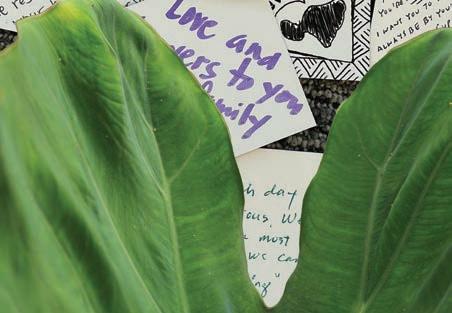
















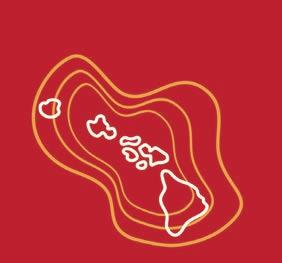









The UH Foundation has launched a $1 billion comprehensive campaign – the largest fundraising effort in Hawai‘i history – to fund the university’s highest priorities, which have been carefully vetted to realize our community’s needs.
For education, enrichment and enlightenment.
For economic vitality and cultural preservation. For our children, our elders, our friends and our neighbors.
The campaign for Hawai‘i’s university is for us. For UH. For Hawai‘i.








































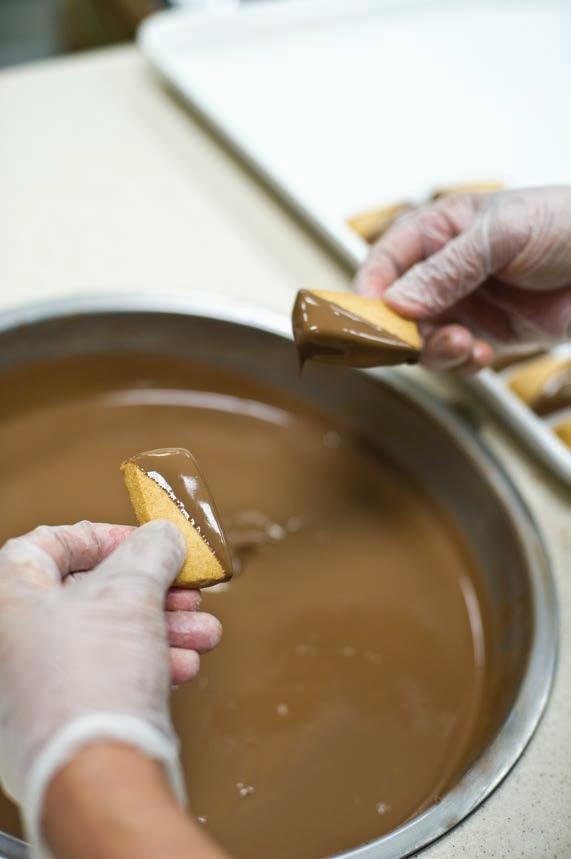



For over 70 years, generations of families have trusted us to help with home purchases, refinancing, and saving for their dreams.
We fight to make loans happen because we strongly believe increased access to financing will allow people to remain in Hawaii and strengthen our community. If no can, we can.



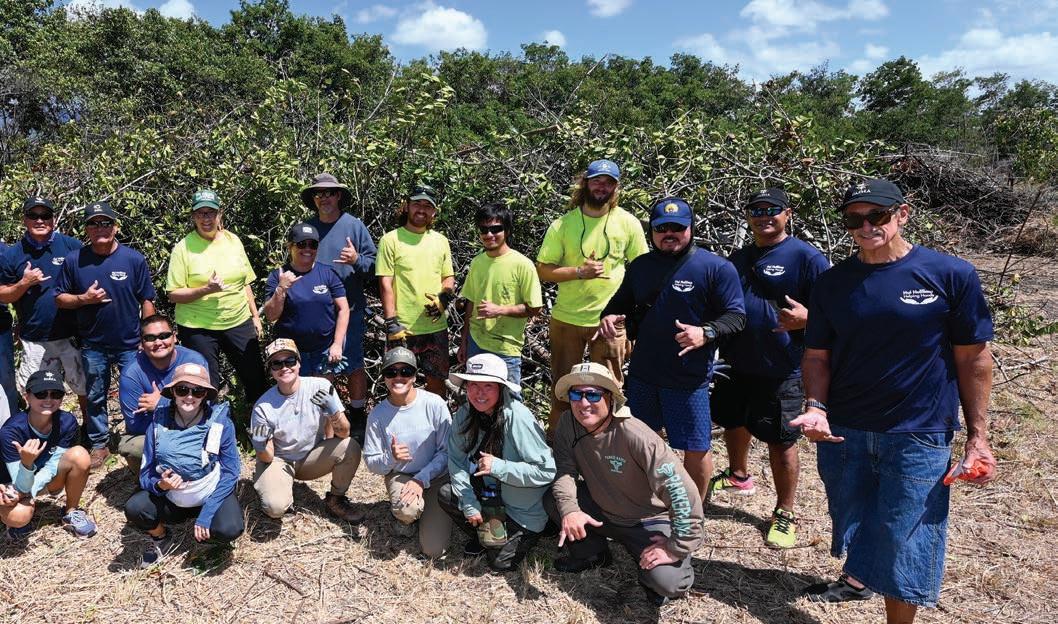
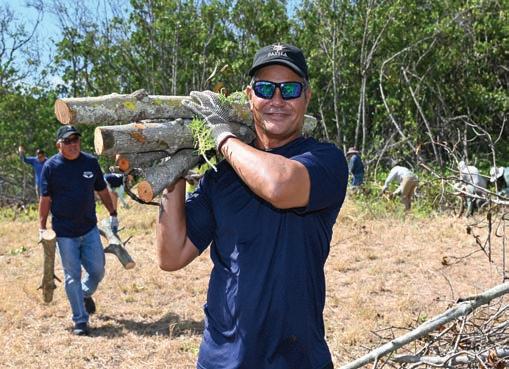





29
2023’s Most Charitable Companies in Hawai‘i
We list 80 organizations that donated $241 million and 73,768 volunteer hours last year, plus provide a behind-the-scenes look at four companies’ relief efforts on Maui.
62 Surveys Reveal Opinions on Major Local Issues
Topics include the governor’s job performance and his emergency housing proclamation, guns, government corruption and red-light cameras.
75 Profiles of Kūpuna Who Continue to Help Hawai‘i
After long and successful careers, these seven Sages Over 70 are still helping their communities in inspiring ways.
45 Special Section: Hawai‘i Philanthropy Awards
Read the 16-page report on the honors marking National Philanthropy Day in November.
Leadership guru Glenn Furuya offers tips for staying vibrant and connecting with people of all ages. Page 86.































































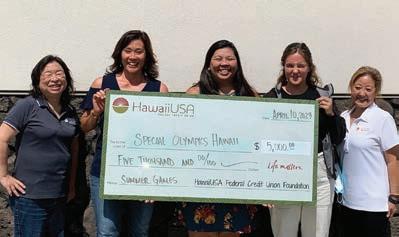

8,868









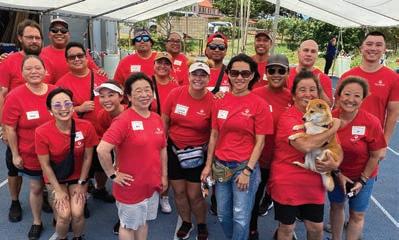





Individuals received free financial education at 159 schools and organizations.*
1,578
Hours volunteered by our employees and their families to communities across Oahu, Maui, the Big Island, and Kauai.*
$353,588 in Monetary and in-kind donations to 162 nonprofit and public service organizations.*

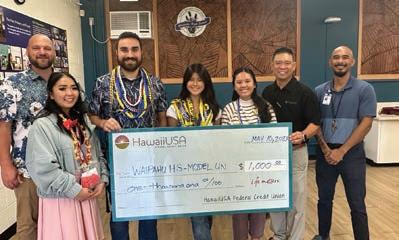



$803,500
In scholarship awards given to graduating high school seniors and undergraduates to further their education since 1990.*
56
Stipend awards provided to State of Hawaii professional and para-professional educators for career enhancement opportunities.*
* Figures are from 2022 HawaiiUSA Community Outreach activities
Lahaina or Lāhainā?
Two ways of pronouncing and spelling the historic town have circulated on social media and in news reports since a devastating wildfire. Which is correct?
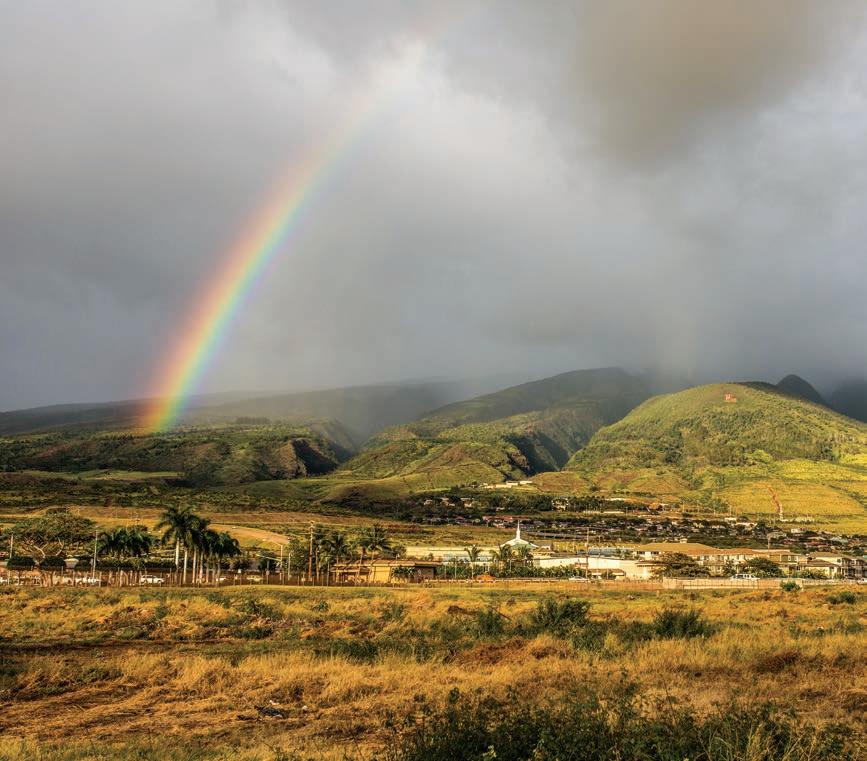
Ways to Fix the Housing Crisis: 6 Ideas From a Sold-Out Event
The potential solutions cover more land for housing, greater density, more use from existing infrastructure, adding voices to decision-making and more.
14
Her Job is Teaching the Next Generation of Voyagers
Bonnie Kahape‘a-Tanner helped found the Kānehūnāmoku Voyaging Academy, which uses a coastal sailing canoe in its Hawaiian culture programs.
18
A Renaissance of Engagement at Honolulu Museum of Art
Attendance at HoMA is up 70% from before the pandemic – and this time there are more locals than tourists coming to see its collection of classics and new art.
20
Keeping Your Workers Safe Can Save Money in the Long Run
These eight tips include a reminder to provide updated training when implementing new processes or when safety regulations change.
22
Nominate Emerging Leaders and Outstanding Small Businesses
Hawaii Business Magazine is accepting nominations for two of our honors programs: 20 for the Next 20 and the Best of Small Business.
23
A Picture Taken Inside Honolulu’s Rail Hub in Pearl City
The hub is where the trains are cleaned and maintained, and where the driverless system is controlled and monitored.
90
Hawai‘i’s National Philanthropy Day Awards
Celebrating this year’s winners as honored by the Association of Fundraising Professionals Aloha Chapter. 45


THINK THE LACK OF HOUSING is our No. 1 problem. I and my sta have covered the issue in many ways over the years and we will continue to do so.
This time, I’m turning the floor over to people who were panelists at a soldout event on housing that I moderated Sept. 20 at YWCA Laniākea. Here are a few condensed highlights.
Joe Kent, executive director of the Grassroot Institute: “Our research shows about 5% of the land in Hawai‘i has been zoned for housing and the other 95% is open space and ag. I’m not talking about building on all that 95%, but even if you built on a fraction of a fraction more, it would allow for more housing. And I think we need not be afraid of the word ‘density,’ because in my mind increased density means a ordable.”
Alana Kobayashi Pakkala, executive VP and managing partner of Kobayashi Group: “Joe was wondering why people are so against urban density. What changes when the building goes from 350 feet to 450 feet? It gets a lot less expensive to build – the land cost gets divided over more units. And guess what? Dense properties won’t become luxury because of their density. So you’re building housing that will stay in that target market naturally. The market deserves market housing. Our young people deserve to do what our parents did: Build home equity. We just have to make it easier.”
Sarah Love, partner at Lung Rose Voss & Wagnild and president of the Building Industry Association of Hawaii: “Density correlates to our infrastructure issue. If you’re trying to build housing in an area that doesn’t have infrastructure, it will cost a lot more to build. If you’re adding density in areas that already have infrastructure, then you save on project costs. So we need to maximize density where we can.”
Sterling Higa, executive director of the nonprofit Housing Hawai‘i’s Future: “What we do at Housing Hawaii’s Future is get people informed with our newsletter (tinyurl.com/HHFnews) and provide them with the targeted opportunities to engage because you have jobs, you have things to do, you’re not going to show up to every committee hearing. But there are critical moments at the county council and state level, where if even half-dozen people show up and say something
sensible, a di erence can be made. The problem is sometimes it’s just B.J. Penn at some meetings or retirement-age homeowners. If you’re not a retirement-age homeowner, your voices are not represented at those meetings. There is no countervailing force. Who calls a politician’s o ce and complains? It’s retirement-age homeowners because they have plenty of time. Meanwhile, their children and grandchildren are leaving because they can’t a ord housing. The people making decisions are influenced in the wrong direction. You don’t have to show up to every meeting, but sometimes you have to show up, write a letter, give testimony or call a legislator. Because one voice at the right moment can shift an entire discussion.”
Billy Pieper, senior VP and director of strategic partnerships at American Savings Bank: “Halewai‘olu Senior Residences is a new a ordable rental housing project (in Honolulu’s Chinatown) and people are already moving in. I remember the pushback from the community. It wasn’t until we actually personified the people who would be moving into this housing – brought them to meetings and they actually locked eyes with folks who had previously said, ‘Not in my backyard’ – that critics of the project finally said, ‘OK, we’ve got to do something di erent. Yes, continue.’ I feel like we need more of that. Bring back the aloha, that kindness.”
Joe Kent: “When it comes to individual projects, we need to allow more by-right development, like they do in other parts of the world, such as Tokyo. (By-right means if the development is allowed by all existing regulations such as the zoning code, parking requirements and so on, it’s not subject to the discretion of local o cials.) In Tokyo, if you want to build within your zone, you can, and you don’t have to ask your neighbors for permission. I hope we can find more ways to allow by-right development here.”






STEVE PETRANIK EDITOR
The G70 Foundation is dedicated, through the spirit of generosity, to improve communities in Hawai‘i through design, education, environment, culture, and community development projects.





21 years 970,000+ 140+ local
fostering a culture of giving in funds given through grants organizations served


culture & humanities
celebrating the diversity of Hawai‘i’s many cultures


community development / housing & shelter
building stronger communities and families


education / youth development
investing into the future, one education at a time


good design makes a difference in the quality of life design / arts


sustaining people and resources into perpetuity environment / sustainability
The G70 Foundation pledged $75,000 to the Hawai‘i Community Foundation’s Maui Strong Fund to help victims of the devastating fires on Maui.
Our hearts are saddened by the recent events in Lāhainā, Maui, and we send our deepest condolences to those impacted by the fires. The imagery of historic Lāhainā – enveloped in fire and smoke – has been difficult to witness even after the flames have subsided. As community partners, we are committed to support efforts as we navigate through the challenging and long road of recovery ahead.
Through our G70 Scholarship + Mentorship program that began in 2021, we have been fortunate to help assist 5 recipients majoring in Architecture, Civil Engineering, or Interior Design throughout their college journey.










WEDNESDAY, DECEMBER 6, 2023
Japanese Cultural Center of Hawai‘i
Hawaii Business Magazine will honor this year’s CEO of the Year at a breakfast celebration on Wed., Dec. 6, at the Japanese Cultural Center. The event is a tribute to the transformative power of visionary leadership. Our guest of honor will join other local leaders and our editor for an informative and inspiring discussion.
THURSDAY, JANUARY 18, 2024
Is Private Equity’s Ownership of Hotels Good for Hawai‘i?
Entrepreneurs Sandbox
THURSDAY, FEBRUARY 15, 2024
Mental Health and Wellness Conference
Japanese Cultural Center
For more information on events visit hawaiibusiness.com/events or contact Magdalena Durak Hershey, Events Manager, at magdalenad@ hawaiibusiness.com
LOCALLY OWNED, LOCALLY COMMITTED SINCE 1955.
Our goal is to strengthen the local economy and help our communities thrive.
Editor & Executive Publisher STEVE PETRANIK stevep@hawaiibusiness.com • (808) 534−7584
Editorial
Managing Editor CYNTHIA WESSENDORF cynthiaw@hawaiibusiness.com • (808) 534−7529
Staff Writer & Engagement Editor NOELLE FUJII-ORIDE noellef@hawaiibusiness.com
Staff Writer CHAVONNIE RAMOS chavonnier@hawaiibusiness.com
Copy Editor ELROY GARCIA
Interns KALAWAI‘A NUNIES, AIMEE WICKLER
Design & Photography
Creative Director KELSEY IGE kelseyi@hawaiibusiness.com • (808) 534−7179
Art Director MALLORY ADAMS-NAKAMURA malloryan@hawaiibusiness.com
Contributing Designer AMY LOWE
Staff Photographer AARON YOSHINO
Digital
Digital Marketing Director JOELLE CABASA joellec@hawaiibusiness.com • (808) 534−7531
Digital Media Specialist MICHELLE TAN michellet@hawaiibusiness.com
Sales & Marketing
Co-Publisher KENT COULES kentc@hawaiibusiness.com • (808) 364−5869
Account Executive PAM SAITO pamelas@hawaiibusiness.com • (808) 364−5897
Account Executive MEA ALOHA SPADY meaalohas@hawaiibusiness.com • (808) 364−6126
Business Development Representative LIESEL STEINHAUER liesels@hawaiibusiness.com • (808) 864−0499
Senior Account Coordinator REBECCA BROOKING rebeccab@hawaiibusiness.com • (808) 534−7560
Events Manager MAGDALENA DURAK HERSHEY magdalenad@hawaiibusiness.com • (808) 534−7578
Circulation
Circulation Manager KIM KOKI kimk@pacificbasin.net • (808) 534−7590
Connect with us on social media: HawaiiBusiness HawaiiBusinessmagazine
Audience Development Director CHUCK TINDLE chuckt@pacificbasin.net • (808) 534−7521
Chairman DUANE KURISU
Chief Executive Officer SUSAN EICHOR
Chief Operating Officer BRANDON KURISU
Chief Financial and Chief Administrative Officer KEN MIYASATO
Chief Revenue Officer PATRICK KLEIN



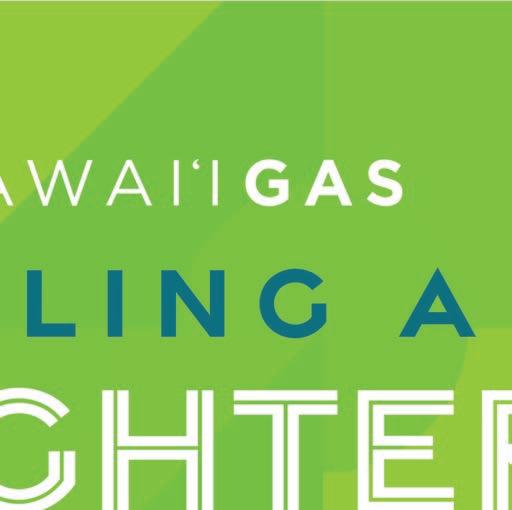

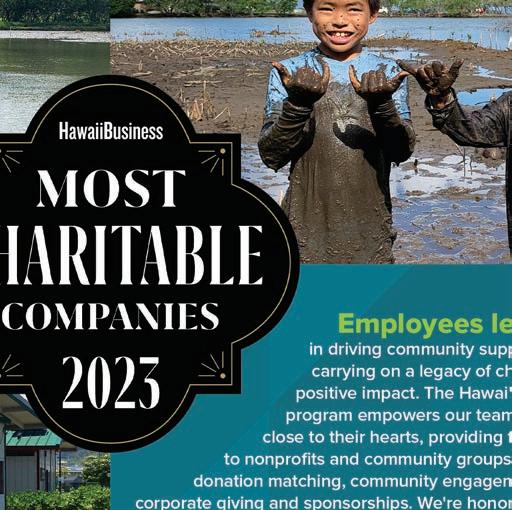


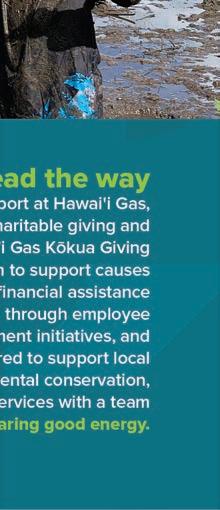
NAME: BONNIE KAHAPE‘ATANNER
JOB: FOUNDER AND PROJECT DIRECTOR, KĀNEHŪNĀMOKU VOYAGING ACADEMY


BY AIMEE WICKLER
BEGINNINGS: Bonnie Kahape‘aTanner’s love of the ocean began while growing up in Kāne‘ohe, where she would fish and paddle in the bay with her father. Her early jobs included one with a tour boat company and another at the Hawai‘i Institute of Marine Biology, which is based at Coconut Island in the bay.
She went on to earn a bachelor’s degree in Hawaiian studies at UH Hilo, a master’s in counseling psychology at Chaminade University, and another master’s in transformative learning and change at the California Institute of Integral Studies.
After preparing for about two years, she sailed for three months in 1999 from Hawai‘i to Micronesia on the voyaging canoe Makali‘i. Since that journey under the direction of Micronesian master navigator Mau Piailug, she’s been sailing, teaching and sharing her voyaging knowledge.
PATH TO TEACHING: “In college I really started to learn about my Hawaiian culture and then also working with youth.”
At UH Hilo, Kahape‘a-Tanner was involved with the Nā Pua No‘eau, a program that offers educational enrichment opportunities for Hawaiian children. Kahape‘a-Tanner later worked on ocean-based learning with students at the Marimed Foundation in Kāne‘ohe.
INSPIRATION: After completing the voyage on Makali‘i to Micronesia, she knew she had to return to Hawai‘i.
“Piailug’s wish for us was: ‘You
need to go home, and you need to share what you learned from me and share what you learned from the voyage.’ ”
FOUNDING A SCHOOL: In 2002, Kahape‘a-Tanner helped establish Hālau Kū Māna Public Charter School and launched Kānehūnāmoku, a 29-foot, double-hulled coastal sailing canoe, now based at Ka‘alaea in Kāne‘ohe Bay.
“The ocean itself has so many healing properties to it, and then when you mix the ocean with a structured program to bring about health and wellbeing for young people, I really saw the power in that.”
“There were immersion schools within the DOE Hawaiian language immersion, but nothing culture based. There was a big push for that and so we started this canoe, Kānehūnāmoku, through the charter school process and through grants.”
The nonprofit Kānehūnāmoku Voyaging Academy continues to work with the school and now offers other programs to ground people in wa‘a culture and practice.
COMPENSATION: Kahape‘a-Tanner and her team are 100% funded by grants for their work with the canoe and cultural education in the community.
“If educators, school teachers only make so little, nonprofit educators are making less or same,” she says.
“Not too many people are willing to devote their whole life to it. And not everybody can do so. We are really blessed to do it.”
CHALLENGES: Kahape‘a-Tanner says finding funding is a big challenge, but “maybe bigger than funding would be access to the ocean – just finding a place for not only our canoe but other canoes like ours that are trying to do similar programs.”
For now, she says, the nonprofit has an agreement over their use of Kualoa Beach Park. There they put Kānehūnāmoku in the water and run programs; however, they must bring the canoe back to their office at the end of the day. The office is a private residence belonging to Kahape‘a-Tanner’s family in Kāne‘ohe, though she says she is trying to find a long-term home for the canoe.
FUTURE OF VOYAGING: Kahape‘a-Tanner’s dream is that every school child in Hawai‘i has the opportunity to touch and learn about the canoe.
“I think you never know what is going to inspire a young person. And so hopefully we will continue to see the fruits of our labor and the benefits in these kids far beyond their experience with Kānehūnāmoku. And maybe it’s that one time on the canoe that inspires them and will carry them throughout life.”
Volunteer or donate at kanehunamoku.org. “We are always looking for more volunteers, especially for our internship program for Native Hawaiians of adult age.”
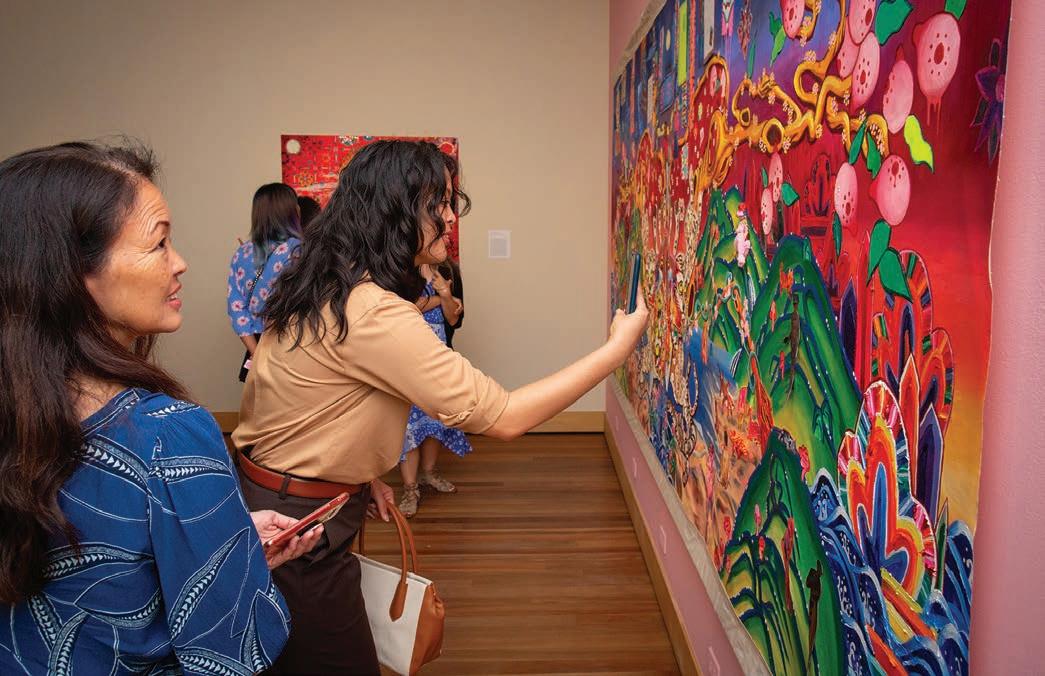
BY AIMEE WICKLER
HALONA NORTON-WESTBROOK AND HER TEAM
recognize their double duty at HoMA, the Honolulu Museum of Art: build upon the museum’s legacy while adapting to a rapidly changing world.
“As a nearly 100-year-old nonprofit, we have a special obligation, commitment and connection to the community that we have to constantly nurture and strengthen and grow in a continual way,” says Norton-Westbrook, who became HoMA’s
director in January 2020 – two months before the Covid pandemic began.
“Coming out of the pandemic, there’s so much in our society that is being reorganized, renegotiated and reconsidered. So, the business model has to be somewhat flexible. You must have a structure, goals and direction, but you also must be responsive to the fact that this is a time of massive societal change.”
These days, the museum is open until 9 on Friday and Saturday evenings so more working people can visit. And HoMA brought back the Honolulu Surf
Film Festival as a fully in-person event this year at its Doris Duke Theatre.
Attendance is up 70% from pre-pandemic numbers and museum engagement has increased four-fold compared with the 2021-22 fiscal year. That engagement includes more people participating in its Art School classes, in-museum activities, tours, workshops, online programs, Family Sunday storytelling and other programs.
Before the pandemic, more tourists than residents visited the museum. Now the ratio has switched, HoMA says.
Among the things that haven’t changed are HoMA’s showcasing exhibitions from local artists and reflecting the diversity of the Islands. Recently, the museum helped launch the careers of Native Hawaiian artist Noah Harders and Korean American artist Lauren Hana Chai, Norton-Westbrook says.
“I think we’re on a good trajectory but there’s always more that we can do, such as getting the word out about the museum and all the different things to see as well as intentionally building local relationships with individuals and organizations.”
She says audience feedback helps the museum understand how to explain and present the nuances and stories of its art in a way that connects to people’s personal experiences.
“The arts contribute to a holistic, fulfilling life. As humans we need time for reflection and appreciation of other cultures and viewpoints. We need time to experience beauty to heal and process things, and I think the museum plays a critical role in providing that space for people,” she says.
HoMA has been doing that since it opened to the public in 1927. Its main funding comes from admission fees, philanthropic donations and the muse-

um’s endowment. Its biggest expense is its staff of 150 employees, whose knowledge and experience the museum depends upon, Norton-Westbrook says.
“Museums are both a business and a mission-driven organization. You can’t let one outweigh the other. There is also the balance of honoring the history but envisioning a further future. In that way
this nonprofit is more complex than a for-profit company.”
Norton-Westbrook draws on her own experience and expertise to help lead HoMA. Before coming to Hawai‘i, she was director of curatorial affairs and curator of modern and contemporary art at the Toledo Museum of Art in Ohio. She holds a master’s degree in art history from Courtauld Institute of Art in London and a doctorate in museology from the University of Manchester.
One way people can support the museum is to spread the word, she says.
“It makes a huge difference to us when people bring their friends, tell their friends how much they love the museum, and become a member,” she says. “That really helps the entire operation and is meaningful to us in terms of keeping our nonprofit going and being here for another 100 years.”

IN HAWAI‘I, EMPLOYERS who have at least one employee are generally required to maintain workers’ compensation coverage, regardless of whether the workers are permanent, temporary, part-time or full-time.
Workers’ compensation claims can be filed for a variety of injuries and illnesses that occur at work – from cuts and strains to repetitive-use injuries like carpal tunnel syndrome to skin disorders due to chemical exposures.
Workers’ compensation benefits can include compensation for lost wages and medical expenses. In the worst cases, workers’ compensation can pay permanent disability or death benefits.
The National Safety Council says the top three occupational injuries involving days away from
work are 1) exposure to harmful substances or environments (36% of such cases), 2) overexertion and bodily reaction (22%), and 3) falls, slips and trips (18%).
Keeping workers safe helps companies avoid expensive workers’ compensation claims and higher insurance rates. It can also boost morale, improve worker retention and increase productivity.
Here are eight tips to cultivate a safe environment.
• Build and maintain management support. This can take many forms: Managers need to be alert to potentially unsafe actions at work and should take active roles in safety training. And they should ensure adequate staffing to meet production and service goals, and invest in measures and resources to prevent inju-
ries, such as providing personal protective equipment and training programs and repairing faulty equipment.
• Model and encourage safe behavior. Unsafe habits can develop if workers are pressured to cut corners to meet deadlines or if they see their supervisors acting unsafely.
• Train your workers to do their jobs safely. Training and education are especially important for new workers, but everyone benefits from refreshers and reminders. Provide updated training when new processes are implemented or changes in safety requirements take place.
• Conduct safety inspections. Regular inspections give you the chance to mitigate workplace hazards before they lead to injuries.
• Train with personal pro-
tective equipment. It’s not enough to have PPE on-hand –workers have to be familiar with the equipment and know how and when to use it.
• Promote safe driving. Make sure your requirements don’t pressure employees to drive unsafely. Keep your vehicles in good condition (that will usually save you money too). If you operate a fleet, telematics programs that use GPS to track drivers can encourage them to act safely behind the wheel. Most importantly, ensure your drivers are qualified to operate your company vehicles.
• Know your industry’s regulatory requirements. Depending on your jurisdiction, you may fall under Hawai‘i or federal occupational safety and health standards. Following these standards can help you avoid both injuries and fines.
• Proactively manage workers’ compensation claims. If a claim is reported, encourage prompt treatment using telehealth if possible. Offer injured workers modified duties if needed until they recover and stay in touch with proactive communication. Staying on top of these cases can ensure workers aren’t away from their jobs longer than necessary.
It’s also important to partner with an insurer that can help you navigate safety concerns in your industry. Consult with your independent agent for guidance.






DEAN ESTABILIO, SUPERVISOR OF RISK & SAFETY MANAGEMENT,
HAWAII
HAWAII BUSINESS MAGAZINE is seeking nominations for two honors programs: 20 for the Next 20 and the Best of Small Business.
• 20 for the Next 20: This program honors emerging leaders – Hawai‘i’s People to Watch. They should have a record of achievement in Hawai‘i and the potential to do much more over the next two decades.
Their accomplishments can have been in business, government, innovation, nonprofits, education or any other field. Successful candidates are intelligent, skillful, energetic and charismatic people from around the Islands.
If you know someone who qualifies, go to hawaiibusiness.com/nominations to submit your candidate. The deadline is Nov. 22. Self-nominations are not accepted. Nominations are limited to those less than 50 years of age on March 1, 2024.
Due to the volume of nominations, unsuccessful candidates and nominators will not be contacted.
• SmallBiz Editor’s Choice Awards: These awards are part of our Best of Small Business coverage honoring outstanding small businesses across the state of Hawai‘i.
Go to hawaiibusiness.com/nominations to nominate a local small business based in Hawai‘i with fewer than the equivalent of 100 full-time employees. Tell us about the company, including why you think it deserves an award. Owners and employees of businesses can nominate their companies. However, local franchises of national companies are not eligible.
Nominations close Dec. 31. Due to the volume of nominations, unsuccessful candidates and nominators will not be contacted.

Central Pacific Bank has been dedicated to providing exceptional customer service and creating a lasting impact in the community. We strive to be more than just a financial institution, but an integral part of the local communities we serve.
When our Maui community faced the aftermath of devastating wildfires, we stepped up to help. Our Foundation donated $50,000 to the American Red Cross and another $25,000 to the Maui Foodbank, all for the cause of relief and recovery. And we didn’t stop there. Our incredible team came together in a company-wide fundraising campaign, rallying support to raise over $22,000 in additional aid.
Central Pacific Bank also joined hands with fellow local banks through the Hawaii Bankers Association, united
in our mission to raise funds and awareness for the Maui Strong Fund. Our Foundation collaborated with Ace Hardware in a community resource program, providing essential supplies to those affected by the fires. We even rolled up our sleeves and took part in a state Capitol drive, collecting vital goods to send to Maui. Many of our dedicated employees volunteered their time, answering phones during the Mala Ola Concert – a heartfelt benefit event that stood in support of Maui residents.

At CPB, we’re driven by a passion for serving our local communities.
With steadfast partnerships with local nonprofit organizations and businesses, we are unwavering in our commitment to stand by our community, offering support during even the most challenging times.




‘ŌLELO HAWAI‘I







TWO WAYS OF PRONOUNCING AND SPELLING the historic town of Lahaina have circulated on social media and in news reports since a devastating August wildfire killed 97 people.
We asked Hawaiian language experts which pronunciation and spelling is correct: Lahaina or Lāhainā?

Two Hawaiian language experts and other sources say the proper spelling and pronunciation doesn’t include diacritical marks.
BY KALAWAI‘A NUNIES
These older tapes are known as Mānaleo Tapes, which Hawaiian language scholars reference for pronunciations, sentence patterns and even songs. They can be found in the archives of the Bishop Museum and online at the Kani‘āina educational resource.

“If you listen to the older tapes with Native speakers, they say ‘Lahaina,’ which if you were to write it out there would be no diacritical markings,” says Hawaiian language scholar and translator Kamuela Yim, who works with organizations on ‘Ōlelo Hawai‘i topics.

“The overwhelming majority say ‘Lahaina.’ And, that’s the thing, you might find an outlier. If 49 people say ‘Lahaina’ and there is one person that says ‘Lāhainā,’ the thing to do is to accept what the critical mass says as the norm,” Yim explains.
“Understanding what the predominant norm is versus the outlier is humongous. To me, that is where the dis-

cussion is. Not what is ‘right’ and what is ‘wrong.’ It’s not to say one is wrong and one is right.”
Larry Kimura, a pioneer of the Hawaiian language revitalization movement and now a professor of Hawaiian language at UH Hilo, says he also defers to how mānaleo born and raised in Lahaina pronounce the name. In the ’70s and ’80s, he interviewed Native speakers for his radio show, Ka Leo Hawai‘i.
“The credence goes to the Native speakers of the language, especially our kūpuna and especially those born and raised there,” he says.

“Place Names of Hawaii,” a commonly used reference book written by









Mary Kawena Pukui, Samuel H. Elbert and Esther T. Mookini, and published by UH Press, also gives the spelling and pronunciation as “Lahaina,” but includes Lāhainā among the place’s old names.
Kimura says the authors don’t cite a source for listing Lāhainā as an old pronunciation, but the term with kahakō means “cruel sun.” The online Hawaiian dictionary at wehewehe.org also uses the Lahaina spelling.
The Hawai‘i Tourism Authority recently updated its website to use the Lahaina spelling. Prior to the fi res, it used both versions. A note on its Maui recovery webpage says, “living kūpuna, mānaleo and recordings of mānaleo serve to demonstrate that the contemporary pronunciation is Lahaina. Heeding the call from the Lahaina community, HTA uses the spelling Lahaina across all platforms.”



Lahaina is not the only Hawaiian place name with disagreement about the correct pronunciation and spelling. For instance, some families for generations have called the island they live on “Moloka‘i” and other families who live there have called it “Molokai.”
And in some cases, people make up their own pronunciations, Kimura says. “Some people want to try and interpret the meaning of a place name and they start to break it apart and decipher it according to what they know, but it’s not the accurate pronunciation.”
The two Hawaiian diacritical marks – the ‘okina (glottal stop) and the kahakō (macron) – were designed to create spellings that would help people pronounce words in ‘Ōlelo Hawai‘i that they did not already know and to help di erentiate between similar sounding words.


For example, the diacritics help differentiate among kālā (dollar), ka lā (the sun/day) and kala (to loosen). Another example is the island of “Lāna‘i” versus lānai (porch) and lanai (sti -backed).
There remains a conversation about the inclusion of diacritical marks in written words. For instance, Iolani Palace, which strives to reflect the history and lifestyle of Hawai‘i during the reign of King Kalakaua, says on its website that it does not use diacritical marks in its written spellings because those marks were not used back then.
‘A‘ohe pau ka ‘ike i ka hālau ho‘okahi –not all knowledge is found in one school – is a Hawaiian saying that ‘Ōlelo Hawai‘i speakers use when discussing such matters. They recognize these conversations as complex and multilayered.

Noelle Fujii-Oride contributed to this story.

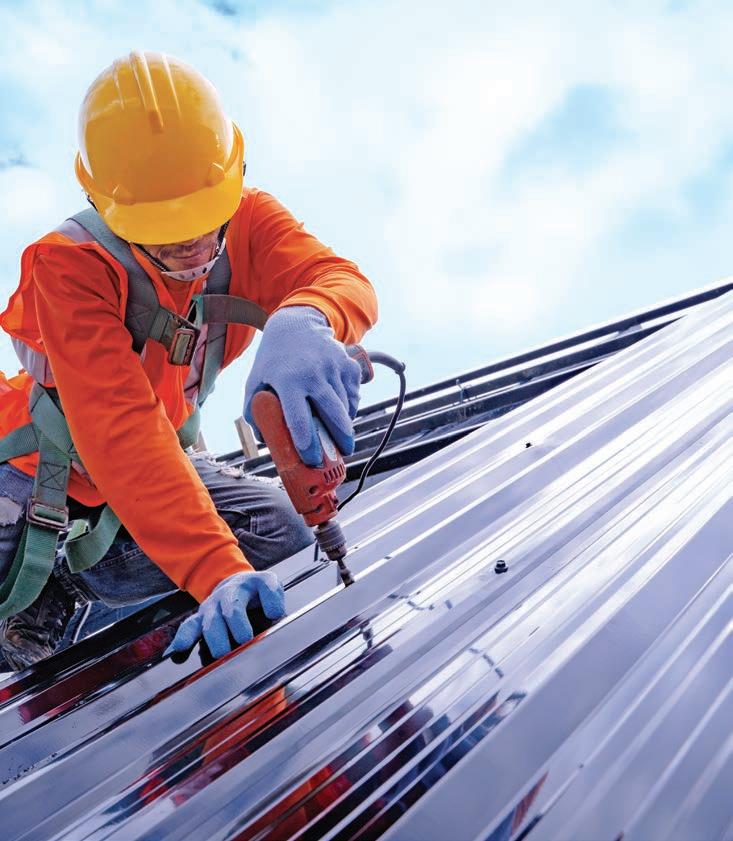
HEMIC’s Family of Companies can do more for your business.
From general contractors, artisans and architects to designers, home renovation specialists, and other building professionals, HEMIC has insurance solutions developed for the specific needs of Hawai‘i businesses. As a 100% local company, we manage all your insurance products under one roof with boots on the ground 24/7. And we serve you with both technical expertise and Aloha
To learn more about the HEMIC Family of Companies and how we can help your business with risk management solutions tailored to your needs, visit HEMIC.com or call us at (808) 524-3642






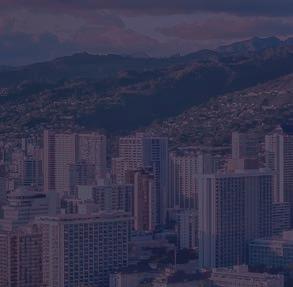









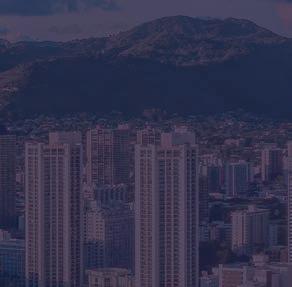













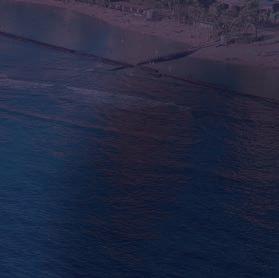





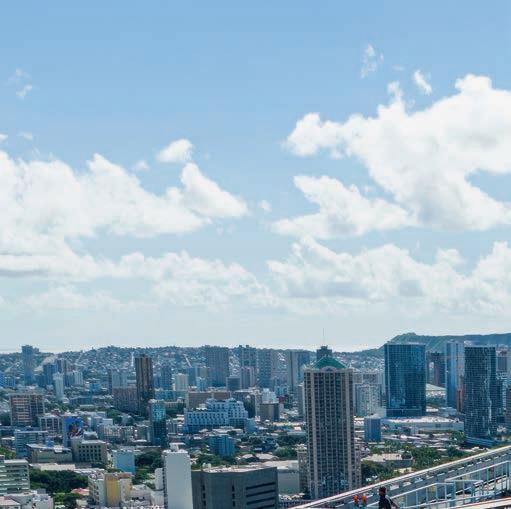























Hawai‘i finds itself at a pivotal crossroad as we rebuild our island communities impacted by the wildfires and long-term effects of the pandemic. Our non-profit organizations remain dedicated champions supporting our most vulnerable residents.
For over a decade, First Hawaiian Bank has been a leading charitable organization in the state. We proudly stand with the companies recognized in this issue, united in our mission to create a more hopeful tomorrow for future generations of kama‘a wildfires champions supporting charitable -ina.

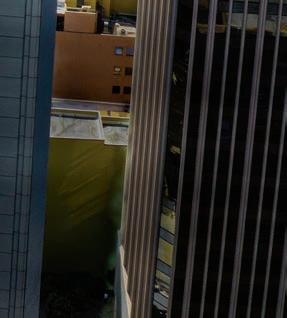

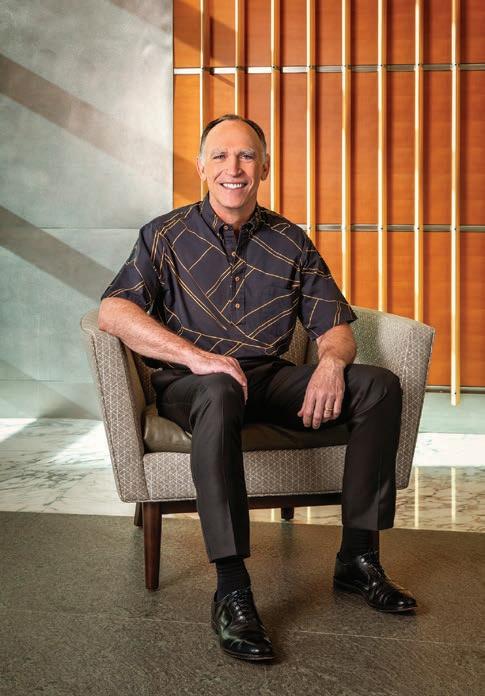
FHB.com
Hawaii Business magazine has been tracking philanthropic contributions by both non-profit organizations and for-profit companies since 2012. First Hawaiian Bank shines as one of the state’s foremost champions within these pages, showcasing their commitment to making a difference in our communities.
Aloha!
At First Hawaiian Bank, we are deeply committed to supporting those in need, and are proud to stand shoulder to shoulder with Hawai‘i’s business community in these efforts.
As we celebrate our 165th anniversary, we are also honored to again be recognized as Hawai‘i’s top corporate donor by Hawaii Business magazine. This recognition underscores the culture and passion our organization has for supporting our community. Our bank and employees see our donations and time spent volunteering as instruments for creating positive change. We take pride in making a difference in a variety of ways — whether it be through providing funding to non-profits who are serving those in need or volunteering with our employees and families to help with a broad range of projects across our island home.
This consistent commitment to community stewardship is reflected in FHB receiving an “Outstanding” rating under the Community Reinvestment Act (CRA) from the Federal Deposit Insurance Corporation (FDIC) for ten consecutive reporting periods since 1995.
The dedication and desire to help our communities is an intrinsic part of the bank’s culture. Our employees live it and are truly fulfilled by helping others. Perhaps no other bank programs illustrates this more than our employee-run Ko - kua Mai giving program, which began in 2007. To date, our employees and retirees have generously donated over $10 million to local nonprofits through this initiative, and in 2022, 99% of our workforce came together, contributing a record-breaking $932,310.
Hawaii Business magazine has done an outstanding job chronicling the stewardship efforts of companies across the state. We commend their tireless work in shining a light on non-profits and dedicated individuals working to enhance the well-being of Hawai‘i’s communities. We hope this annual issue continues to inspire the philanthropic and community spirit that makes Hawai‘i such a special place.
Sincerely,

Robert S. Harrison Chairman, President & Chief Executive Officer, First Hawaiian Bank









These 80 organizations donated nearly $241 million and 73,768 volunteer hours to help Hawai‘i’s nonprofits
BY CYNTHIA WESSENDORF


ONPROFITS HELP HAWAI‘I THRIVE, but they couldn’t do their crucial work without generous donations of time and money. That’s where Hawai‘i’s private businesses and philanthropic institutions come in, contributing year after year.
The 80 companies and charitable organizations on this year’s Most Charitable Companies list gave nearly $241 million and 73,768 volunteer hours in 2022. The money, time and effort help sustain an array of groups working to improve health care, housing, education, food security and community farming, the environment, animal welfare and other vital areas.
Every summer we survey companies and nonprofits to gather information on the previous year’s cash and in-kind donations, as well as employees’ volunteer hours during work time or through company-sponsored events.
The top five givers on the list this year are all charitable organizations with wide-ranging missions to help Hawai‘i’s people: Hawai‘i Community Foundation, UH Foundation, Kamehameha Schools, Aloha United Way, and The Harry and Jeanette Weinberg Foundation. Two of these givers, the UH Foundation and Aloha United Way, were also top receivers of donations from companies on the list, with 26 naming Aloha United Way or United Way branches on the Neighbor Islands as a primary recipient, and 22 naming the UH Foundation or specific university programs.
Among for-profit companies, First Hawaiian Bank was the top charitable giver in 2022, donating $6.3 million and 11,264 volunteer hours. Rounding out the top five among for-profit companies are Matson, Bank of Hawai‘i, Hawai‘i Foodservice Alliance and Hawaiian Electric Industries.
Congratulations to these organizations, and all the others on this list, for their generosity and hard work.
Does Your Company Belong on This List?
If you’d like to receive surveys for this list and others, please contact cynthiaw@hawaiibusiness.com.
ABOUT: For-profit architecture, interior design, planning, sustainability, existing building services and historic architecture firm
EMPLOYEES: 86
COMPANY’S TOTAL CASH AND IN-KIND DONATIONS: $238,899
EMPLOYEE VOLUNTEER HOURS: 975
TOP NONPROFITS SUPPORTED: Aloha United Way, Child & Family Service, Aloha Tree Alliance ahl.design
Alaka‘ina Foundation
ABOUT: Nonprofit Native Hawaiian organization
EMPLOYEES: 1,400
COMPANY’S TOTAL CASH AND IN-KIND DONATIONS: $1,642,000
TOP NONPROFITS SUPPORTED: Pauahi Foundation, UH Foundation, Chaminade University, Alaka‘ina Digital Bus Program alakainafoundation.org
Alaska Airlines
ABOUT: For-profit commercial airline
EMPLOYEES: 10
COMPANY’S TOTAL CASH AND IN-KIND DONATIONS: $583,430
TOP NONPROFITS SUPPORTED: travel2change, Kupu Hawaii, Aloha United Way, Kanu Hawaii, ClimbHI alaskaair.com
Alexander & Baldwin
ABOUT: For-profit commercial real estate company
EMPLOYEES: 107
COMPANY’S TOTAL CASH AND IN-KIND DONATIONS: $975,000
EMPLOYEE VOLUNTEER HOURS: 572
TOP NONPROFITS SUPPORTED: Aloha United Way, Maui
United Way, Hawai‘i Symphony Orchestra, Kaunoa Senior Services – Nutrition Program, Pu‘uhonua O Wai‘anae alexanderbaldwin.com
Aloha Green Holdings
ABOUT: For-profit, state-licensed medical cannabis dispensary
EMPLOYEES: 98
COMPANY’S TOTAL CASH AND IN-KIND DONATIONS: $50,000
EMPLOYEE VOLUNTEER HOURS: 240
TOP NONPROFITS SUPPORTED: AccesSurf, Honolulu Zoo, Hawai‘i Health & Harm Reduction Center, Hawai‘i Appleseed, Hawai‘i LGBT Legacy Foundation agapoth.com
TOP 10 DONOR
Aloha United Way ABOUT: Nonprofit charitable organization
EMPLOYEES: 48
COMPANY’S TOTAL CASH AND IN-KIND DONATIONS: $13,368,000
EMPLOYEE DONATIONS: $30,068
TOP NONPROFITS SUPPORTED: Catholic Charities Hawai‘i, The Institute for Human Services, Kōkua Kalihi Valley Comprehensive Services, Hawai‘i Foodbank, Waikīkī Community Center auw.org
AlohaCare
ABOUT: Nonprofit health insurance provider
EMPLOYEES: 268
COMPANY’S TOTAL CASH AND IN-KIND DONATIONS: $1,054,127
EMPLOYEE VOLUNTEER HOURS / MONETARY DONATIONS: 463 / $23,755
TOP NONPROFITS SUPPORTED: Healthy Mothers Healthy
Babies, Waikiki Health, University Health Partners of Hawai‘i, Hawai‘i Foodbank, Mālama I Ke Ola Health Center
alohacare.org
ABOUT: For-profit retail flooring and installation company, with remodeling services
EMPLOYEES: 140
COMPANY’S TOTAL CASH AND IN-KIND DONATIONS: $160,000
EMPLOYEE VOLUNTEER HOURS / MONETARY DONATIONS: 240 / $63,000
TOP NONPROFITS SUPPORTED: Aloha United Way, Pali Momi Medical Center, The Salvation Army, Grassroot Institute of Hawaii, Navian Hawaii americanfloorandhome.com
ABOUT: For-profit banking and financial services company
EMPLOYEES: 1,100
COMPANY’S TOTAL CASH AND IN-KIND DONATIONS: $1,462,474
EMPLOYEE VOLUNTEER HOURS / MONETARY DONATIONS: 12,329 / $212,043
TOP NONPROFITS SUPPORTED: Aloha United Way, Child & Family Service, Kapiolani Health Foundation, Kupu Hawaii, Partners in Development Foundation asbhawaii.com
ABOUT: For-profit manufacturer and retailer of framed art, cabinets, closet systems; retailer of top slipper brands
EMPLOYEES: 165
COMPANY’S TOTAL CASH AND IN-KIND DONATIONS: $45,000 theartsourceinc.com
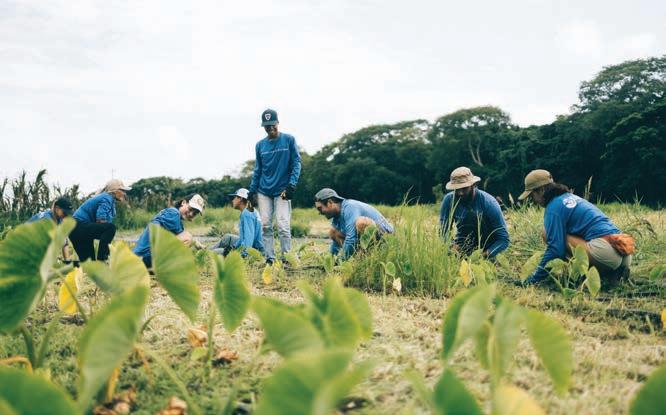
embers of the Kupu ‘Āina Corps help the nonprofit Kauluakalana plant kalo at the 25-acre Manu site in Kailua, O‘ahu. It’s the first time the land has been cultivated in more than a century. Since starting up in 2007, Kupu Hawaii participants have logged about 3 million hours of service, planted more than 1.5 million native specimens and removed 151,000 acres of invasive species. The organization has trained about 5,700 young people for jobs in conservation, sustainability, the culinary arts and environmental education. Four companies on this year’s list – Alaska Airlines, American Savings Bank, Finance Factors and Par Hawaii – named Kupu Hawaii as a primary beneficiary of their giving in 2022.
Atlas Insurance Agency
ABOUT: For-profit insurance agency
EMPLOYEES: 94
COMPANY’S TOTAL CASH AND IN-KIND DONATIONS: $250,477
TOP NONPROFITS SUPPORTED:
PBS Hawai‘i, Parents And Children Together, Hawaii Theatre, Hale Mahaolu, Hale Makua Health Services, Child & Family Service atlasinsurance.com TOP 10 DONOR Third Place Employee Giving Bank of Hawai‘i
ABOUT: For-profit financial services company
EMPLOYEES: 2,105
COMPANY’S TOTAL CASH AND IN-KIND DONATIONS: $3,400,000
EMPLOYEE VOLUNTEER HOURS / MONETARY DONATIONS: 6,026 / $577,202
TOP NONPROFITS SUPPORTED: Aloha United Way, American Red Cross of Hawaii, Hawai‘i Foodbank, The Institute for Human Services, UH Foundation boh.com
Better Homes and Gardens Real Estate Advantage Realty
ABOUT: For-profit real estate company
EMPLOYEES: 201
COMPANY’S TOTAL CASH AND
IN-KIND DONATIONS: $50,601
EMPLOYEE VOLUNTEER HOURS / MONETARY DONATIONS: 51 / $10,522
TOP NONPROFITS SUPPORTED: UH Foundation’s Advantage Kokua Scholarship, Alzheimer’s Association, Habilitat, Ho‘ōla Nā Pua, The Salvation Army betterhawaii.com
Bishop & Company
ABOUT: For-profit staffing, executive recruitment company
EMPLOYEES: 10
COMPANY’S TOTAL CASH AND IN-KIND DONATIONS: $28,719
TOP NONPROFITS SUPPORTED: Women’s Fund of Hawai‘i,
American Red Cross of Hawaii bishopco.net
Bank of Hawaii
ABOUT: Nonprofit sole provider of blood components to Hawai‘i hospitals
EMPLOYEES: 164
COMPANY’S TOTAL CASH AND IN-KIND DONATIONS: $61,558 TOP NONPROFITS SUPPORTED: HUGS, Hawai‘i Foodbank, Blood Centers of America Foundation, Adventist Health Castle bbh.org
Consulting
ABOUT: For-profit engineering and architecture company
EMPLOYEES: 277
COMPANY’S TOTAL CASH AND IN-KIND DONATIONS: $218,800
EMPLOYEE VOLUNTEER HOURS / MONETARY DONATIONS: 1,250 / $42,830
TOP NONPROFITS SUPPORTED: Aloha United Way, Hawai‘i Foodbank, AdoptA-Highway, UH Foundation, American Public Works Association bowersandkubota.com
ABOUT: For-profit law firm
EMPLOYEES: 155
COMPANY’S TOTAL CASH AND IN-KIND DONATIONS: $47,700
EMPLOYEE VOLUNTEER HOURS / MONETARY DONATIONS: 1,188 / $12,997 cades.com
Central Pacific Financial Corp.
ABOUT: For-profit financial institution
EMPLOYEES: 743
COMPANY’S TOTAL CASH AND IN-KIND DONATIONS: $1,810,000
EMPLOYEE VOLUNTEER HOURS
/ MONETARY DONATIONS: 6,200 / $430,000 cpb.bank
ABOUT: For-profit real estate sales
EMPLOYEES: 4
COMPANY’S TOTAL CASH AND IN-KIND DONATIONS: $33,859
EMPLOYEE VOLUNTEER HOURS: 1,040
TOP NONPROFITS SUPPORTED: Hawaii State Senior Center, Big Brothers Big Sisters, Korean Catholic Community, Hawaii HomeOwnership Center, Hope For Dogs Rescue c21ipropertieshawaii.com
ABOUT: Nonprofit human services counseling EMPLOYEES: 324
COMPANY’S TOTAL CASH AND IN-KIND DONATIONS: $14,707
EMPLOYEE VOLUNTEER HOURS: 338
TOP NONPROFITS SUPPORTED: Hawai‘i Data Collaborative, Kaua‘i United Way, Maui United Way childandfamilyservice.org
Clarence T.C. Ching Foundation
ABOUT: Nonprofit private foundation
EMPLOYEES: 2
COMPANY’S TOTAL CASH AND IN-KIND DONATIONS: $5,790,474
TOP NONPROFITS SUPPORTED: Saint Louis School, Punahou’s PUEO Program, PBS Hawai‘i, St. Francis Healthcare System, REHAB Hospital of the Pacific clarencetcchingfoundation.org
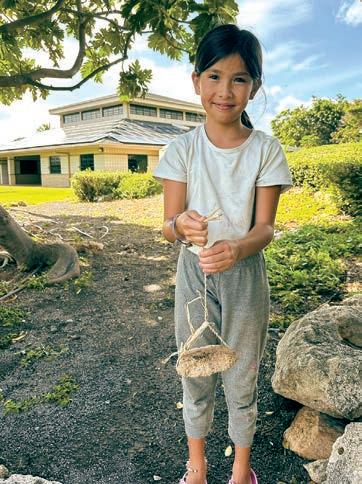
Clinical Labs of Hawaii
ABOUT: For-profit medical and clinical laboratory
EMPLOYEES: 777
COMPANY’S TOTAL CASH AND IN-KIND DONATIONS: $130,433
EMPLOYEE VOLUNTEER HOURS: 40
TOP NONPROFITS SUPPORTED: Straub Foundation, American Heart Association, Kapiolani Health Foundation, Hilo Medical Center Foundation clinicallabs.com
ABOUT: For-profit vacation rental management company
EMPLOYEES: 13
COMPANY’S TOTAL CASH AND IN-KIND DONATIONS: $92,374
EMPLOYEE VOLUNTEER HOURS: 30
TOP NONPROFITS SUPPORTED: Compassion International, Cup of Cold Water Min-
young participant of the Boys & Girls Club of Hawaii’s after-school programs shows the Native Hawaiian cordage techniques she mastered and tested for strength. Every year at the nonprofit’s nine clubhouses on O‘ahu and Kaua‘i, thousands of young people engage in art, activities and sports, while also getting homework help and healthy food. The programs fill the gap between the school day ending and parents returning home – a vulnerable time when many children and teens, particularly those from low-income working families, are left on their own. The nonprofit was named as a primary recipient of charitable giving by Hawaii State Federal Credit Union, Hilton Grand Vacations, Locations, Servco Pacific and Waikiki Health.
73,768
Total employee volunteer hours
istries, Maui Food Bank, Kumulani Chapel, Faithfully Restored coconutcondos.com
This Lahaina-based company was impacted by the wildfires. To support its team members, go to https:// bit.ly/45YoPSy.
ABOUT: For-profit, Herman Miller-certified dealer providing furnishings to businesses, government, health care and higher education
EMPLOYEES: 42
COMPANY’S TOTAL CASH AND IN-KIND DONATIONS: $13,767
TOP NONPROFITS SUPPORTED: Hawai‘i Rotary, UH Foundation, Ho‘ōla Nā Pua, Women’s Fund of Hawai‘i, Diamond Head Theatre op-hawaii.com
ABOUT: For-profit agriculture company
EMPLOYEES: 161
COMPANY’S TOTAL CASH AND IN-KIND DONATIONS: $72,500
EMPLOYEE VOLUNTEER HOURS
/ MONETARY DONATIONS: 350 / $20,000
TOP NONPROFITS SUPPORTED: Hawai‘i Foodbank, Agricultural Leadership Foundation of Hawai‘i, Hawai‘i Farm Bureau, Kaua‘i United Way, Kaua‘i Independent Food Bank hawaii.corteva.com
Dorvin D. Leis Co.
ABOUT: For-profit mechanical contractor
EMPLOYEES: 400
COMPANY’S TOTAL CASH AND IN-KIND DONATIONS: $131,000
TOP NONPROFITS SUPPORTED: American Heart Association, Maui Health Foundation, Special Olympics Hawai‘i, Boy Scouts of America – Aloha Council, GIFT Foundation of Hawaii leisinc.com
ABOUT: For-profit, service-disabled, veteran-owned small business
EMPLOYEES: 54
COMPANY’S TOTAL CASH AND IN-KIND DONATIONS: $168,000
TOP NONPROFITS SUPPORT -
ED: Fellowship of Christian Athletes, Feeding Hawai‘i Together, Oahu Veterans Council and Center, Kīnā‘ole Foundation dynapnr.com
ABOUT: For-profit company specializing in residential mortgages, CRE loans, savings accounts, certificates of deposit
EMPLOYEES: 113
COMPANY’S TOTAL CASH AND IN-KIND DONATIONS: $94,150
EMPLOYEE VOLUNTEER HOURS / MONETARY DONATIONS: 2,175 / $11,803
TOP NONPROFITS SUPPORTED: Kupu Hawaii, Native Hawaiian Legal Corporation, Girl Scouts of Hawaii, American Judicature Society, Assets School financefactors.com
First Place Employee Giving
First Hawaiian Bank
ABOUT: For-profit banking and financial services company
EMPLOYEES: 2,093
COMPANY’S TOTAL CASH AND IN-KIND DONATIONS: $6,341,174
EMPLOYEE VOLUNTEER HOURS / MONETARY DONATIONS: 11,264 / $932,310
TOP NONPROFITS SUPPORTED: ‘Aha Pūnana Leo, Bishop Museum, Child & Family Service, Kaua‘i Housing Development Corp., The Queen’s Health System fhb.com
ABOUT: For-profit property and casualty insurance company
EMPLOYEES: 244
COMPANY’S TOTAL CASH AND IN-KIND DONATIONS: $707,274
EMPLOYEE DONATIONS: $20,000
TOP NONPROFITS SUPPORTED: American Heart Association, Aloha United Way, American Red Cross of Hawaii, UH Foundation, Mālama Learning Center ficoh.com
ABOUT: For-profit architecture, planning and environmental services, interior design, civil engineering, sustainable development and technology services company
EMPLOYEES: 102
COMPANY’S TOTAL CASH AND IN-KIND DONATIONS: $363,356
EMPLOYEE VOLUNTEER HOURS / MONETARY DONATIONS: 151 / $2,500
TOP NONPROFITS SUPPORTED: Waikīkī Community Center, The Salvation Army, Oahu
Economic Development Board, YWCA O‘ahu, Hawai‘i Foodbank g70.design
H-I
TOP 10 DONOR
The Harry and Jeanette Weinberg Foundation
ABOUT: Private charitable foundation
EMPLOYEES: 61
COMPANY’S TOTAL CASH AND IN-KIND DONATIONS: $12,648,000
TOP NONPROFITS SUPPORTED: Pu‘uhonua O Wai‘anae, Partners in Development Foundation, Hawai‘i Community Lending, The Food Basket, Hui Mālama i ke Ala ‘Ūlili hjweinberg.org
TOP 10 DONOR
Hawai‘i Community Foundation
ABOUT: Nonprofit community foundation
EMPLOYEES: 73
COMPANY’S TOTAL CASH AND IN-KIND DONATIONS: $63,300,000
EMPLOYEE DONATIONS: $20,000
$240.9 MILLION
Total cash and in-kind donations in 2022 from all companies on the list
TOP NONPROFITS SUPPORTED: As one of the largest grantmakers in Hawai‘i, HCF supports numerous nonprofits in the state. hawaiicommunityfoundation. org
ABOUT: Nonprofit dental benefits provider
EMPLOYEES: 131
COMPANY’S TOTAL CASH AND IN-KIND DONATIONS:
$1,481,954
EMPLOYEE DONATIONS: $20,315
TOP NONPROFITS SUPPORTED: UH’s John A. Burns School of Medicine, UH Foundation, Hawaii Academy of Science, HDS Foundation, ‘Iolani ‘Āina-Informatics HawaiiDentalService.com
TOP 10 DONOR
Hawai‘i Foodservice Alliance
ABOUT: For-profit wholesale food distribution and manufacturing company
EMPLOYEES: 550
COMPANY’S TOTAL CASH AND IN-KIND DONATIONS: $3,016,580
TOP NONPROFITS SUPPORTED: Hawai‘i Foodbank, Kaua‘i Food Bank, Waianae Coast Comprehensive Health Center’s ‘Elepaio Social Services Program hfahawaii.com
ABOUT: For-profit, full-service gas energy company
EMPLOYEES: 353
COMPANY’S TOTAL CASH AND IN-KIND DONATIONS: $281,730
EMPLOYEE VOLUNTEER HOURS / MONETARY DONATIONS: 350 / $30,669
TOP NONPROFITS SUPPORTED: Aloha United Way, Special Olympics Hawai‘i, American
Red Cross of Hawaii, Hawai‘i Agricultural Foundation, Hawai‘i Green Growth, UH Foundation hawaiigas.com
ABOUT: For-profit accounting and tax services, HR outsourcing, health care staffing, home care, consulting and advisory services company
EMPLOYEES: 167
COMPANY’S TOTAL CASH AND IN-KIND DONATIONS: $15,000
EMPLOYEE VOLUNTEER HOURS / MONETARY DONATIONS: 300 / $3,000
TOP NONPROFITS SUPPORTED: AccesSurf, Mālama Maunaloa, Kapi‘olani Community College and UH, Charity Walk, Special Olympics Hawai‘i, Hawai‘i State Coalition Against Domestic Violence thehawaiigroup.com
ABOUT: For-profit real estate sales, and long-term and vacation rentals company
EMPLOYEES: 57
COMPANY’S TOTAL CASH AND IN-KIND DONATIONS: $132,713
TOP NONPROFITS SUPPORTED: Hawai‘i Land Trust, Hawai‘i Community Foundation, Maui Film Festival hawaiilife.com
ABOUT: Non-profit health insurance company
EMPLOYEES: 3
COMPANY’S TOTAL CASH AND IN-KIND DONATIONS: $179,500
TOP NONPROFITS SUPPORTED: American Heart Association, Alzheimer’s Association, American Diabetes Association, St. Francis Healthcare Foundation, March of Dimes hmaa.com
Hawaii Medical Service Association
ABOUT: Nonprofit health organization, health insurance
EMPLOYEES: 1,277
COMPANY’S TOTAL CASH AND IN-KIND DONATIONS: $1,095,000
EMPLOYEE VOLUNTEER HOURS
/ MONETARY DONATIONS: 1,380 / $143,711
TOP NONPROFITS SUPPORTED: Aloha United Way, UH Foundation, Blood Bank of Hawaii, Healthy Mothers Healthy Babies, Ohana Pacific Foundation hmsa.com
Hawaii State Federal Credit Union
ABOUT: Nonprofit credit union
EMPLOYEES: 385
COMPANY’S TOTAL CASH AND IN-KIND DONATIONS: $136,038
TOP NONPROFITS SUPPORTED: Friends of the Library of Hawaii, GIFT Foundation of Hawaii, Chaminade University, Boys & Girls Club of Hawaii, Parents And Children Together, Kapiolani Health Foundation hawaiistatefcu.com
Hawaiian Airlines
ABOUT: For-profit commercial airline
EMPLOYEES: 6,226
COMPANY’S TOTAL CASH AND IN-KIND DONATIONS: $951,402
EMPLOYEE VOLUNTEER HOURS: 6,795
TOP NONPROFITS SUPPORTED: Kāko‘o ‘Ōiwi, KEY Project, Ko‘olau Mountains Watershed Partnership, Friends of Hakalau Forest National Wildlife Refuge, Hawai‘i Foodbank hawaiianairlines.com
Hawaiian Electric Industries
ABOUT: For-profit energy and financial services company
EMPLOYEES: 3,602
COMPANY’S TOTAL CASH AND IN-KIND DONATIONS: $3,000,000
EMPLOYEE DONATIONS: $750,000
TOP NONPROFITS SUPPORTED: Aloha United Way and United Way branches on Neighbor Islands, UH Foundation, Hawai‘i Community Foundation, Polynesian Voyaging Society hei.com
Hawaiian Host Group
ABOUT: For-profit consumer packaged-goods company
EMPLOYEES: 335
COMPANY’S TOTAL CASH AND IN-KIND DONATIONS: $217,800
TOP NONPROFITS SUPPORTED: Hawai‘i Foodbank, Merrie Monarch Festival, Aloha United Way, Hawai‘i Agricultural Foundation, YWCA O‘ahu hawaiianhostgroup.com
ABOUT: For-profit, Hawaiian-owned beach stand and sailing canoe activities company at Disney Aulani and Four Seasons
EMPLOYEES: 16
COMPANY’S TOTAL CASH AND IN-KIND DONATIONS: $20,010
EMPLOYEE VOLUNTEER HOURS: 280
TOP NONPROFITS SUPPORTED: Da Hui Paddle Race, Da Hui Backdoor Shootout, Kahuku Motocross Park, Kawaipuna Foundation hawaiianoceanadventures. com

ABOUT: For-profit provider of integrated communications, broadband, data center and entertainment
EMPLOYEES: 1,200
COMPANY’S TOTAL CASH AND IN-KIND DONATIONS: $1,225,217
EMPLOYEE VOLUNTEER HOURS / MONETARY DONATIONS: 3,256 / $124,751
TOP NONPROFITS SUPPORTED: American Heart Association, Hawaii Island Adult Care, Aloha United Way, Palama Settlement, Catholic Charities Hawai‘i hawaiiantel.com
HawaiiUSA Federal Credit Union
ABOUT: Nonprofit credit union
EMPLOYEES: 380
ore than 200 houseless people live at Pu‘uhonua O Wai‘anae, a self-organized community near the Wai‘anae harbor. Through fundraising by their nonprofit, Dynamic Community Solutions, the group purchased nearly 20 acres of land in Wai‘anae Valley and is now building permanent dwellings with communal kitchens and bathrooms, surrounded by land for growing food. The Pu‘uhonua O Wai‘anae Farm Village project was named as a primary recipient of charitable giving by Alexander & Baldwin and The Harry and Jeanette Weinberg Foundation; the latter gave a $1 million capital grant in 2022. Other recent funders on the Most Charitable list include Cades Schutte, Central Pacific Bank, The Clarence T.C. Ching Foundation, G70 and First Hawaiian Bank.
COMPANY’S TOTAL CASH AND IN-KIND DONATIONS: $380,355
EMPLOYEE VOLUNTEER HOURS: 1,578
TOP NONPROFITS SUPPORTED: Hawai‘i Lodging & Tourism Association’s Kaua‘i Charity Walk, Weed and Seed Hawaii, Alzheimer’s Association, Catholic Charities Hawai‘i’s Lanakila Multi-Purpose Senior Center, Partners in Development Foundation hawaiiusafcu.com
Hilton Grand Vacations
ABOUT: For-profit vacation ownership company
COMPANY’S TOTAL CASH AND IN-KIND DONATIONS: $202,236
EMPLOYEE VOLUNTEER HOURS / MONETARY DONATIONS: 1,970 / $32,093
Children’s Justice Center, Maui Food Bank; also, donates parking lot and water every Saturday to nonprofits for car-wash fundraisers ceramictileplus.com
Kāhala Nui
ABOUT: Nonprofit life plan community
EMPLOYEES: 201
COMPANY’S TOTAL CASH AND IN-KIND DONATIONS: $2,239,850
EMPLOYEE VOLUNTEER HOURS: 883
TOP NONPROFITS SUPPORTED: Alzheimer’s Association, Catholic Charities Hawai‘i, Hawai‘i Meals on Wheels, Kōkua Kalihi Valley Comprehensive Services, Project Dana kahalanui.com
ABOUT: Nonprofit integrated health care organization, health plan and medical care
EMPLOYEES: 2,834
TOP NONPROFITS SUPPORTED:
Aloha United Way, Habitat for Humanity, Boys & Girls Club of Hawaii, Clean the World, Waipā Foundation hiltongrandvacations.com
JR Doran Inc. / Ceramic Tile Plus and Exclusively Yours
ABOUT: For-profit, family-owned tile, countertop and cabinetry store
EMPLOYEES: 30
COMPANY’S TOTAL CASH AND IN-KIND DONATIONS: $50,000
TOP NONPROFITS SUPPORTED: Hawaii Animal Rescue Foundation, Maui Search and Rescue, UH Shidler College of Business, Friends of the
COMPANY’S TOTAL CASH AND IN-KIND DONATIONS: $1,915,000
EMPLOYEE VOLUNTEER HOURS / MONETARY DONATIONS: 1,707 / $900
TOP NONPROFITS SUPPORTED: Partners In Care, Project Vision Hawai‘i, Hawaiian Community Assets, The Institute for Human Services, Feed the Hunger kp.org
ABOUT: Private, nonprofit charitable educational trust
EMPLOYEES: 2,210
COMPANY’S TOTAL CASH AND IN-KIND DONATIONS: $44,025,436
EMPLOYEE DONATIONS: $120,730
Maui relief efforts took many forms. Here are stories from four organizations on the Most Charitable Companies 2023 list that are among the myriad businesses helping with the recovery.
BY CYNTHIA WESSENDORF
N THE WEEK AFTER
THE AUG. 8 FIRE, as Lahaina lay in ruins, questions began circulating at First Hawaiian Bank: Did the safe-deposit boxes and, more importantly, the customers’ belongings inside, survive the fire? And, if they did, could a team get them out and back to customers, some of whom had lost everything else they had?
All the bank’s employees and retirees had been located and were safe, but the Lahaina branch had burned to the ground, along with more than 2,000 other structures. Access to the town was restricted to emergency crews.
While photos of the bank showed only rock pillars and stones remaining, the fate of the vault, where the boxes were kept, was less clear.
“You could see part of the vault wall but not the door,” says Robert Harrison, the bank’s chairman, president and CEO. “We knew everything was gone at that point … but it felt possible that the vault had survived.”
While the optimists were hopeful its contents were intact as well, “the realists were more skeptical,” says Bill Weeshoff, a senior VP and marketing communications division manager at FHB. It seemed far more likely
that the fire’s extreme heat would have destroyed the metal boxes and everything inside them.
But the bank had to try. Danielle Yafuso, a senior VP and bank properties manager, began organizing the mission’s complicated logistics. She applied for permission to enter, hired a team of experts to help with the extraction, and organized equipment to be flown and shipped to Maui, including a special forklift designed for moving safe-deposit boxes.
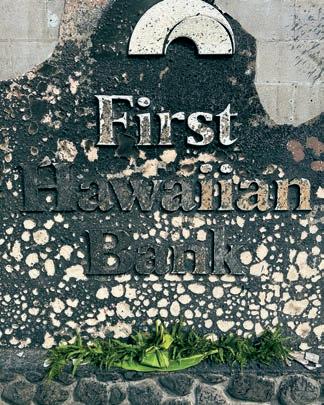
All the pieces came together to enter Lahaina on Friday morning, Sept. 1, as Yafuso traveled to the site with Executive VP Cameron Nekota and four other employees. They were accompanied by the entourage of contractors, a vault specialist, moving company employees and members of the Maui County Police Department.
The scene on the ground was bleak. The shattered remnants of structures surrounded the bank site, now rubble. Federal marshals and ATF agents patrolled the area.
“It was very sobering for all of us … just the gravity of what we saw when we got there,” says Nekota.
Wearing respirators and protective clothing, the extraction team began drilling through the vault’s thick wall to create an entry point. The work continued through the heat of the afternoon, as anxiety rose. The job was far more difficult than anyone had expected.
“It was like watching the (prison escape) movie ‘The Shawshank Redemption’ play out over the course of the day, just because of the nature of what was going on and the fact that we were all on edge being down there,” recalls Nekota.
The O‘ahu team had planned to finish by early afternoon and fly home, but as the sun retreated, some of them booked hotel rooms, while others from the Maui-based crew agreed to return the next day, on Saturday. Two federal marshals stayed at the site overnight.
“A
T FHB’S WAILUKU BRANCH, after the “mass chaos” of the initial post-fire days, Lisa Tomihama, a senior VP and region manager for Maui, turned her attention to customer outreach.
She and her team repeatedly contacted the 350 clients with safe-deposit boxes in Lahaina, many of whom were staying in shelters and with friends and family members. They gave updates about the recovery effort and tried to alleviate customers’ worries.
But no one really knew what the outcome would be. “There was a lot of anxiety on our part too,” says Tomihama. “The million-dollar question was, what is the condition of the contents?”

On Saturday, Sept. 2, the answer finally arrived: An opening had been cut into the vault’s wall and the bank’s team had stepped inside. The optimists were right. All the safe-deposit boxes were intact, and even many keys hanging from the locks were pristine.
“I thought for sure nothing was going to survive,” says Nekota, who was one of the first to enter the vault. “At that moment – being around all that tragedy and that really apocalyptic situation — to see things preserved in that way … it was a happy emotion in a sea of chaos, and a big relief to know there was something good we could deliver to people who were dealing with so much.”
It wasn’t until after 8 p.m. on Saturday and many trips later – some in Nekota’s rented pickup truck – that the Lahaina vault’s cash, files, equipment and safe-deposit boxes were safely secured in the Wailuku branch’s vault.
On Tuesday morning, Sept. 5, the Wailuku branch opened solely for cus-
tomers to retrieve their belongings. Locksmiths were on hand to help. It was an unexpectedly cathartic experience for everyone.
“One customer was crying,” says Tomihama. “She had lost her home, and the only thing remaining was the contents of her box. What she was most anxious for was her grandmother’s wedding ring, which she thought had been lost forever.”
Over several days, more people arrived, some traveling from the mainland. They retrieved passports, birth certificates, social security cards, family heirlooms and funds.
The documents, in particular, gave people “a feeling of safety and completeness,” says Harrison. “Your stress level goes down, and there’s so much stress on folks right now.”
Tomihama agrees. “The emotional impact it had on these customers of being united with their precious belongings – to give them a bright spot amidst
all the tragedy – they said they’ll never forget this. And I never will either.”
First Hawaiian Bank has worked to find long-term housing for their employees who lost their homes and started an employee emergency cash fund. It set up loan deferrals and forbearances for customers, as well as waivers of banking fees.
The bank donated $250,000 to the Hawai‘i Community Foundation’s Maui Strong Fund and helped launch the Hawaii Banker’s Association’s Aloha for Maui, a program involving eight local banks that accept monetary donations to help the recovery. By late September, FHB had raised $540,000 through its branch network.
N THE EARLY HOURS OF AUG. 9, Daniel Chun, Alaska Airlines’ regional VP in Hawai‘i, got an urgent
request from Lt. Gov. Sylvia Luke’s office: Stop the flow of tourists into Maui. Current visitors would need to be evacuated and arrivals discouraged from coming as hotels filled up with emergency crews and displaced residents.
Alaska Airlines immediately put out notices that people should cancel and reschedule their trips, which most did. But the company maintained its eight daily flights from the continental U.S. to Maui as a way to keep evacuees flowing out and emergency relief supplies flowing in.
“Within the first 24 hours, we had teams in Seattle (Alaska Air’s headquarters) purchase pallets and pallets of supplies from Costco, everything from water and pillows to towels and diapers,” says Chun.
He estimates that 180,000 pounds of relief supplies were flown into Maui during the first three days after the Lahaina fire. To date, he says well over 200,000 pounds of supplies were transported, though “we sort of lost count after a while.”
In addition, several rescue flights to Honolulu were added – the first time Alaska has made inter-island runs. The flights brought visitors fleeing from Maui to Honolulu, then returned with goods from O‘ahu.
Some of those goods were piles of donations left at the state Capitol in an Aug. 11 relief drive organized by Maui’s three state senators, Angus McKelvey, Gilbert Keith-Agaran and Lynn DeCoite. Goods were trucked to the Honolulu Airport, where they were loaded by hand into Alaska’s small planes and flown to Kahului.
“The outpouring of support from the world has been quite overwhelming,” says Chun.
From the Maui airport, supplies from the continental U.S. and O‘ahu traveled on trucks and buses to community hubs in West and Upcountry Maui. Chun joined one caravan, and says people would take only what they needed, saying they wanted to ensure that everyone got a share.
“Our Maui team did a lot of the heavy lifting,” says Chun of the nearly 100 staff on the ground there. He says they even came to the airport on their days off to help distribute water, snacks
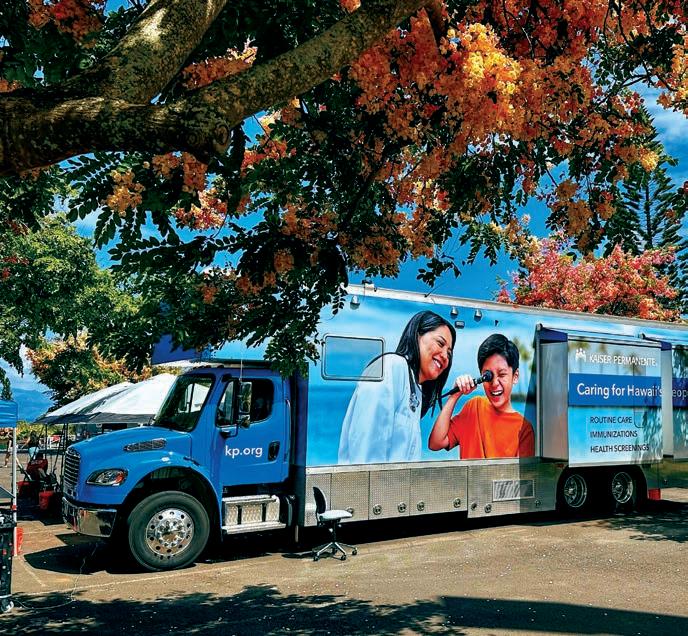
and bedding to stranded tourists trying to get home.
But as the weeks wore on, concerns mounted about “what the economic hurt was going to be for the island overall,” says Chun. In August, visitor arrivals to Maui fell nearly 58% and spending fell 49%, according to the state Department of Business, Economic Development and Tourism.
“There were people who lost everything in the fires, and now they were at risk of losing their jobs and their businesses,” says Chun. His team partnered with Maui small businesses to disseminate the message that visitors were welcome outside the crisis zones.
The company also set up a program with the nonprofit Kanu Hawaii to distribute 27 million free miles to Maui residents impacted by the wildfires. Chun says the travel miles can cover anything from a mental-health break to a trip to tour colleges. (See kanuhawaii.org to ap -
ply). And the company and its employees made a $150,000 donation to the Council for Native Hawaiian Advancement.
“We don’t have infinite resources so we need to make sure that we’re investing in the right places,” says Chun. “We want to have the greatest amount of impact and fill the gaps. … This is going to be a very, very long road, and we are committed.”
EMERGENCY EQUIPMENT
ARRIVES BY SEA
HILE CARGO AREAS IN ALAS -
KA’S PLANES were packed with critical supplies, Hawai‘i’s largest interisland shipping company, Young Brothers, loaded its barges to Kahului with much larger items, including 20 containers of bottled water and ready-to-eat meals for FEMA, vehicles for Hawaiian Electric Co. and Verizon, a mobile medical unit operated by Kaiser Permanente and a
mobile clinic used by Healthy Mothers Healthy Babies.
Those critical supplies and equipment were delivered in the early days of the relief effort. In total, about 110 containers of supplies were incorporated into the four weekly sailings that Young Brothers runs from Honolulu to Maui, which includes a new barge for vehicles.
While some shipments were reimbursed, about $50,000 was transported as in-kind donations, says Chris Martin, VP of operations for Young Brothers. The company also sent extra chassis to Maui so containers of relief supplies could be pulled to Lahaina by trucks.
“Everyone was reaching out to help so we could get critical cargo to Lahaina as quickly as possible,” says Martin. “Even the livestock community was offering their trucking capacity. I’ve been in the tug and barge industry for almost 27 years now, and I’ve never seen this much support.”
While critical needs have slowed, Young Brothers continues to store dozens of containers of donations at its Honolulu and Kahului piers, including items like play sets, beds and clothing. Martin says the company is working with Maui County officials to distribute the items once people are in long-term
“ ONE CUSTOMER WAS CRYING. SHE HAD LOST HER HOME, AND THE ONLY THING REMAINING WAS THE CONTENTS OF HER BOX.”
—Lisa Tomihama, senior VP and region manager for Maui, First Hawaiian Bank, after customers recovered the contents of their safety deposit boxes
housing. The company has also loaned chassis to organizations that are storing excess donations.
The result is that the company has run low of containers and chassis. “For something like this, with the need to respond immediately, it can sometimes deplete your inventory of equipment,” he says.
Young Brothers is now trying to secure more containers and chassis, which is part of a $100 million investment in upgrading its fleet. The goal, says Martin, is to continue helping the relief effort by storing goods for future use, while maintaining efficient service to the Neighbor Islands through the busy holiday season.
The company is matching up to $125,000 in donations to the Hawai‘i Foodbank, which supports its counterpart on Maui. Donations can be made at bit.ly/3ETlZme.
AVID TUMILOWICZ, SENIOR DIRECTOR OF COMMUNITY
HEALTH AT KAISER PERMANENTE, says the organization’s experience with wildfires in California helped it quickly grasp how far-reaching the disaster’s impact would be, and to respond with a multitude of services.
When the Lahaina Clinic was destroyed, Kaiser Permanente contacted patients and switched them to virtual visits or nearby facilities. A team of pharmacists and couriers traveled back and forth to Lahaina to deliver medications and prescription refills – a particular challenge for people with ongoing health conditions who lost their medications.
Kaiser Permanente opened firstaid stations in Lahaina and other spots, which were free to the entire community. Giant mobile health clinics, shipped from O‘ahu and California, were set up in Lahaina.
By early October, the mobile clinics had moved to Kā‘anapali, with free shuttle service from Lahaina, and offered first aid, pediatric care, a pharmacy, vaccinations and some ob-gyn services to everyone.
Providing free services to non-members is “the right thing to do,” says Tumilowicz. “As a nonprofit healthcare system, our mission is to increase
access to high-quality health care to everyone.”
A free support line was launched for anyone affected by the wildfires to help them manage stress and build coping skills.
In October, free parenting classes were offered to help people deal with the emotional and psychological needs of their children after the tragedy, and free classes were launched on how to heal after loss.
Tumilowicz says the outpouring of support and camaraderie has been strong on Maui, but it’s overlaid with a “heavy feeling” on the island, as people process what’s happened.
“It’s not just as simple as the trauma that people survived. It’s the fact that the entire fabric of the community, the reason why you get up in the morning – your job, your family, your volunteer network – that’s gone. People have lost so much,” he says.
Health-care professionals on Maui tell him that mental-health needs have spiked. He worries that the resulting stress will create a cascade of other physical ailments, which can linger through people’s lives, and even through generations.
In his role at Kaiser Permanente, Tumilowicz is responsible for awarding grants to community-based organizations working in areas such as affordable housing, food security, education and mental health.
At the start of the emergency, Kaiser Permanente donated more than $1 million in immediate grants and employee contributions to the Hawai‘i branches of the American Red Cross and the Salvation Army, the Maui Food Bank, Maui Health Foundation, Hawai‘i Community Foundation and Maui United Way.
“We are getting as much support as we can via funding, via providers, via technical assistance – whatever it may be – for both the short- and long-term recovery,” Tumilowicz says.
TOP NONPROFITS SUPPORTED:
Ho‘okāko‘o Corp., Chaminade University, UH Foundation, UH System, Partners in Development Foundation ksbe.edu
Kawailoa Development
ABOUT: For-profit resort and golf course
EMPLOYEES: 891
COMPANY’S TOTAL CASH AND IN-KIND DONATIONS: $90,000
TOP NONPROFITS SUPPORTED: Hawai‘i Community Foundation, UH Foundation, Wilcox Health Foundation, Island School poipubaygolf.com, grandhyattkauai.com

n 2022, Hawai‘i Foodbank distributed 17.4 million pounds of food on O‘ahu and Kaua‘i, including 4.6 million pounds of fresh produce. On average, the nonprofit helps feed more than 120,000 people a month, many of whom would go hungry without the assistance. Hawai‘i Foodbank says the number of food-insecure people in Hawai‘i is high, with 1 in 6 residents experiencing hunger in the past year, including 1 in 4 keiki. Thirteen donors on the Most Charitable Companies list named Hawai‘i Foodbank as one of their top recipients: Aloha United Way, AlohaCare, Bank of Hawai‘i, Blood Bank of Hawaii, Bowers + Kubota Consulting, Corteva Agriscience, G70, Hawaii Foodservice Alliance, Hawaiian Airlines, Hawaiian Host Group, Matson, University of Hawai‘i and Young Brothers.
ABOUT: For-profit termite and general pest control services company
EMPLOYEES: 61
COMPANY’S TOTAL CASH AND IN-KIND DONATIONS: $124,500
EMPLOYEE VOLUNTEER HOURS: 50
TOP NONPROFITS SUPPORTED: The Salvation Army, Child & Family Service, Latter-Day Saint Charities, Girl Scouts of Hawaii, Boy Scouts of America – Aloha Council kilaueapest.com
ABOUT: For-profit visitor attraction, cattle ranching, diversified agriculture and real estate company
EMPLOYEES: 349
COMPANY’S TOTAL CASH AND IN-KIND DONATIONS: $372,134
TOP NONPROFITS SUPPORTED: Kualoa Ranch Foundation, UH Foundation, Agricultural Leadership Foundation of Hawai‘i, KEY Project, Native Hawaiian Hospitality Association kualoa.com
Kyo-ya Hotels
ABOUT: For-profit hotel and resort company
EMPLOYEES: 2,495
COMPANY’S TOTAL CASH AND IN-KIND DONATIONS: $296,980
EMPLOYEE VOLUNTEER HOURS
/ MONETARY DONATIONS: 1,653 / $83,400 kyoyahotelsandresorts.com
ABOUT: For-profit commercial construction company
EMPLOYEES: 62
COMPANY’S TOTAL CASH AND IN-KIND DONATIONS: $26,416
EMPLOYEE VOLUNTEER HOURS
/ MONETARY DONATIONS: 1,939 / $363,000
TOP NONPROFITS SUPPORTED: 5 For The Fight, Habitat for Humanity, Special Olympics Hawai‘i, Adopt A Family, Wilcox Health Foundation laytonconstruction.com
ABOUT: For-profit real estate sales and services company
COMPANY’S TOTAL CASH AND IN-KIND DONATIONS: $198,688
EMPLOYEE VOLUNTEER HOURS: 727
TOP NONPROFITS SUPPORTED: Backpack to School, Boys & Girls Club of Hawaii, Family Programs Hawaii, Hawaiian Hope, UH Foundation locationshawaii.com
ABOUT: For-profit real estate development and investment company
EMPLOYEES: 20
COMPANY’S TOTAL CASH AND IN-KIND DONATIONS: $332,186
EMPLOYEE VOLUNTEER HOURS / MONETARY DONATIONS: 272 / $7,575
TOP NONPROFITS SUPPORTED: U.S. Vets, Teach For America, Special Olympics Hawai‘i, American Red Cross of Hawaii, Housing Hawai‘i’s Future macnaughton.com
ABOUT: For-profit ocean transportation, logistics and supply chain services company
EMPLOYEES: 2,362
COMPANY’S TOTAL CASH AND IN-KIND DONATIONS: $5,900,000
EMPLOYEE DONATIONS: $202,000
TOP NONPROFITS SUPPORTED:
Hawai‘i Foodbank, United Way (O‘ahu, Hawai‘i, Maui, Kaua‘i, Moloka‘i branches), American Heart Association, Catholic Charities Hawai‘i, American Red Cross of Hawaii matson.com
Maui Divers of Hawaii
ABOUT: For-profit fine jewelry manufacturer, wholesaler and retailer
EMPLOYEES: 160
COMPANY’S TOTAL CASH AND IN-KIND DONATIONS: $120,000 mauidivers.com
The Nakupuna Companies
ABOUT: For-profit, Native Hawaiian-owned family of companies
EMPLOYEES: 822
COMPANY’S TOTAL CASH AND IN-KIND DONATIONS: $1,825,266
EMPLOYEE VOLUNTEER HOURS / MONETARY DONATIONS: 197 / $15,471
TOP NONPROFITS SUPPORTED: Pauahi Foundation, Polynesian Voyaging Society, APIA Scholars, Purple Mai‘a Foundation, Mālama Loko Ea Foundation nakupuna.com
Nordic PCL Construction
ABOUT: For-profit general contractor
EMPLOYEES: 250
COMPANY’S TOTAL CASH AND IN-KIND DONATIONS: $338,602
EMPLOYEE VOLUNTEER HOURS / MONETARY DONATIONS: 900 / $38,946
TOP NONPROFITS SUPPORTED: Aloha United Way, Special Olympics Hawai‘i, Kapiolani Health Foundation, UH Foundation, American Heart Association nordicpcl.com
Only the
ABOUT: For-profit clothing manufacturer and retailer
EMPLOYEES: 200
COMPANY’S TOTAL CASH AND IN-KIND DONATIONS: $107,000
EMPLOYEE VOLUNTEER HOURS
/ MONETARY DONATIONS: 165 / $1,500
TOP NONPROFITS SUPPORTED: Ronald McDonald House Charities, Soles4Souls, American Red Cross of Hawaii, Hawaiian Humane Society, Maui Humane Society crazyshirts.com
ABOUT: For-profit consulting services, cloud services, managed services, value-added resale company
EMPLOYEES: 95
COMPANY’S TOTAL CASH AND IN-KIND DONATIONS: $32,900
EMPLOYEE VOLUNTEER HOURS
/ MONETARY DONATIONS: 88 / $455
TOP NONPROFITS SUPPORTED: Hawai‘i Executive Collaborative, Waipahu Public Library, American Heart Association, Alzheimer’s Association, Navian Hawaii pacxa.com
ABOUT: For-profit refining, distribution and marketing of petroleum products and transportation fuels company
EMPLOYEES: 607
COMPANY’S TOTAL CASH AND IN-KIND DONATIONS: $424,567
EMPLOYEE DONATIONS: $32,000
TOP NONPROFITS SUPPORTED: Aloha United Way, Special Olympics Hawai‘i, Hawai‘i Nature Center, Hawaiian Canoe Racing Association, Kupu Hawaii parhawaii.com
TOP 11 NONPROFITS RECEIVING SUPPORT
Aloha United Way / Neighbor Island United Ways 26
University of Hawai‘i / UH Foundation 22
Hawai‘i Foodbank 13
American Heart Association 10
American Red Cross of Hawaii 7
Special Olympics Hawai‘i 7
Catholic Charities Hawai‘i 6
Alzheimer’s Association 5
Boys & Girls Club of Hawaii 5
Kapiolani Health Foundation 5
The Salvation Army 5
NONPROFITS RECEIVING SUPPORT FROM 3-4 COMPANIES
Chaminade University
Child & Family Service
Girl Scouts of Hawaii
Habitat for Humanity
Hawai‘i Community Foundation
The Institute for Human Services
Kupu Hawaii
Partners in Development Foundation
YWCA O‘ahu
Pasha Hawaii
ABOUT: For-profit ocean transportation company, operating between Hawai‘i and the U.S. West Coast for containerized and roll-on/ roll-off cargo
EMPLOYEES: 483
COMPANY’S TOTAL CASH AND IN-KIND DONATIONS: $700,817 pashahawaii.com
Prince Resorts Hawaii
ABOUT: For-profit hotel, hotel management services and golf course company
EMPLOYEES: 1,290
COMPANY’S TOTAL CASH AND IN-KIND DONATIONS: $1,161,361
EMPLOYEE VOLUNTEER HOURS / MONETARY DONATIONS: 1,368 / $94,928
TOP NONPROFITS SUPPORTED: The Nature Conservancy of Hawai‘i, Hawaiian Legacy Reforestation Initiative, Hawai‘i Land Trust – Mahukona, Charity Walk, Hawai‘i Island United Way princeresortshawaii.com
Servco Pacific
ABOUT: For-profit company specializing in automotive distribution and retail, musical instruments, car sharing, venture/growth capital
EMPLOYEES: 2,210
COMPANY’S TOTAL CASH AND IN-KIND DONATIONS: $315,203
EMPLOYEE VOLUNTEER HOURS / MONETARY DONATIONS: 1,852 / $198,578
TOP NONPROFITS SUPPORTED: Boys & Girls Club of Hawaii, UH Foundation, Catholic Charities Hawai‘i, Honolulu Habitat for Humanity, Kaua‘i United Way servco.com
ABOUT: For-profit, cleantech startup dedicated to reducing livestock methane emissions with Limu kohu
EMPLOYEES: 26
COMPANY’S TOTAL CASH AND IN-KIND DONATIONS: $14,600
EMPLOYEE VOLUNTEER HOURS: 573
TOP NONPROFITS SUPPORT -
ED: Kua‘āina Ulu ‘Auamo, Hui Ho‘olako for Hawaiian Initiatives, Kupa ‘Āina o Keauhou, Hui Kaloko Honokōhau symbrosia.co
ABOUT: Nonprofit health insurance, workplace wellness solutions company
EMPLOYEES: 167
COMPANY’S TOTAL CASH AND IN-KIND DONATIONS: $660,000
EMPLOYEE VOLUNTEER HOURS / MONETARY DONATIONS: 34 / $10,000
TOP NONPROFITS SUPPORTED: Kapiolani Health Foundation, American Heart Association, American Red Cross of Hawaii, Assets School, Friends of Hawaii Charities uhahealth.com
ABOUT: For-profit commercial airline
COMPANY’S TOTAL CASH AND IN-KIND DONATIONS: $530,000
EMPLOYEE VOLUNTEER HOURS: 529
TOP NONPROFITS SUPPORT -
ED: Elemental Excelerator, Kanu Hawaii, Girl Scouts of Hawaii, Movers & Shakas united.com
ABOUT: Nonprofit higher education and research institution
EMPLOYEES: 8,164
COMPANY’S TOTAL CASH AND IN-KIND DONATIONS: See UH Foundation
EMPLOYEE CASH AND IN-KIND DONATIONS: $214,594
Top nonprofits supported: Aloha United Way, Hawai‘i Foodbank hawaii.edu
Hawai‘i
ABOUT: Nonprofit provider of alumni services and fundraising for UH
EMPLOYEES: 91
COMPANY’S TOTAL CASH AND IN-KIND DONATIONS:
$48,644,881
TOP NONPROFITS SUPPORT -
ED: University of Hawai‘i programs, research and students uhfoundation.org
ABOUT: Nonprofit federally qualified health center providing affordable medical and social services
EMPLOYEES: 197
COMPANY’S TOTAL CASH AND IN-KIND DONATIONS: $11,000
TOP NONPROFITS SUPPORTED: Boys & Girls Club of Hawaii, Honolulu Pride – Hawai‘i LGBT Legacy Foundation waikikihealth.org
ABOUT: For-profit financial services company
EMPLOYEES: 41
COMPANY’S TOTAL CASH AND IN-KIND DONATIONS: $1,505,500
TOP NONPROFITS SUPPORTED: YWCA O‘ahu, Habitat for Humanity, The Queen’s Medical Center, Goodwill Hawaii, Honpa Hongwanji Mission of Hawaii wellsfargoadvisors.com
HONORABLE MENTION
Alan Shintani Inc.
$3,474 (company) / $2,574 (employees)
Bella Pietra Design
$3,500
Concentric LLC
dba Industrial Battery Solutions
$2,440
Hawaii Water Service Co.
$6,100
Intech Hawaii
$4,350
Tanaka of Tokyo Restaurants Ltd.
$7,930
T&T Tinting Specialists Inc.
$4,690
ABOUT: For-profit water park and amusement center
EMPLOYEES: 422
COMPANY’S TOTAL CASH AND IN-KIND DONATIONS: $284,700
TOP NONPROFITS SUPPORTED: HUGS, United Cerebral Palsy Association of Hawai‘i, Carole Kai Charities and many schools wetnwildhawaii.com
Windward Auto Group
ABOUT: For-profit new and used car and truck sales, parts and service company
EMPLOYEES: 130
COMPANY’S TOTAL CASH AND IN-KIND DONATIONS: $36,904
EMPLOYEE DONATIONS: $2,272
TOP NONPROFITS SUPPORTED: Kapiolani Health Foundation, special needs children’s programs, Habilitat, Laulima Giving Program, Giving Hope Hawaii, American Heart Association jerryforthepeople.com
Y. Hata & Co.
ABOUT: For-profit food service wholesale distribution, wholesale store, public warehousing company
EMPLOYEES: 460
COMPANY’S TOTAL CASH AND IN-KIND DONATIONS: $770,279
TOP NONPROFITS SUPPORTED: Aloha Harvest, The Salvation Army, UH Foundation, Hawaii Restaurant Association, UH’s Culinary Institute of the Pacific yhata.com
Young Brothers
ABOUT: For-profit interisland freight transportation company
EMPLOYEES: 383
COMPANY’S TOTAL CASH AND IN-KIND DONATIONS: $179,915
EMPLOYEE DONATIONS: $5,500
TOP NONPROFITS SUPPORTED: Aloha United Way, Relay For Life, Hawai‘i Foodbank, Coast Guard Foundation youngbrothershawaii.com
Special thanks to peer publications with the Alliance of Area Business Publishers that worked with Hawaii Business to fundraise for the Hawai‘i Community Foundation’s Maui Strong Fund. Participating publications cover Baton Rouge, Des Moines, Florida, Georgia, Hartford, Indianapolis, Kansas City, Los Angeles, Maine, Milwaukee, Nebraska, Providence, San Fernando Valley, Spokane, Tacoma, Virginia, Westchester County, and the city publications of Crain Communications.

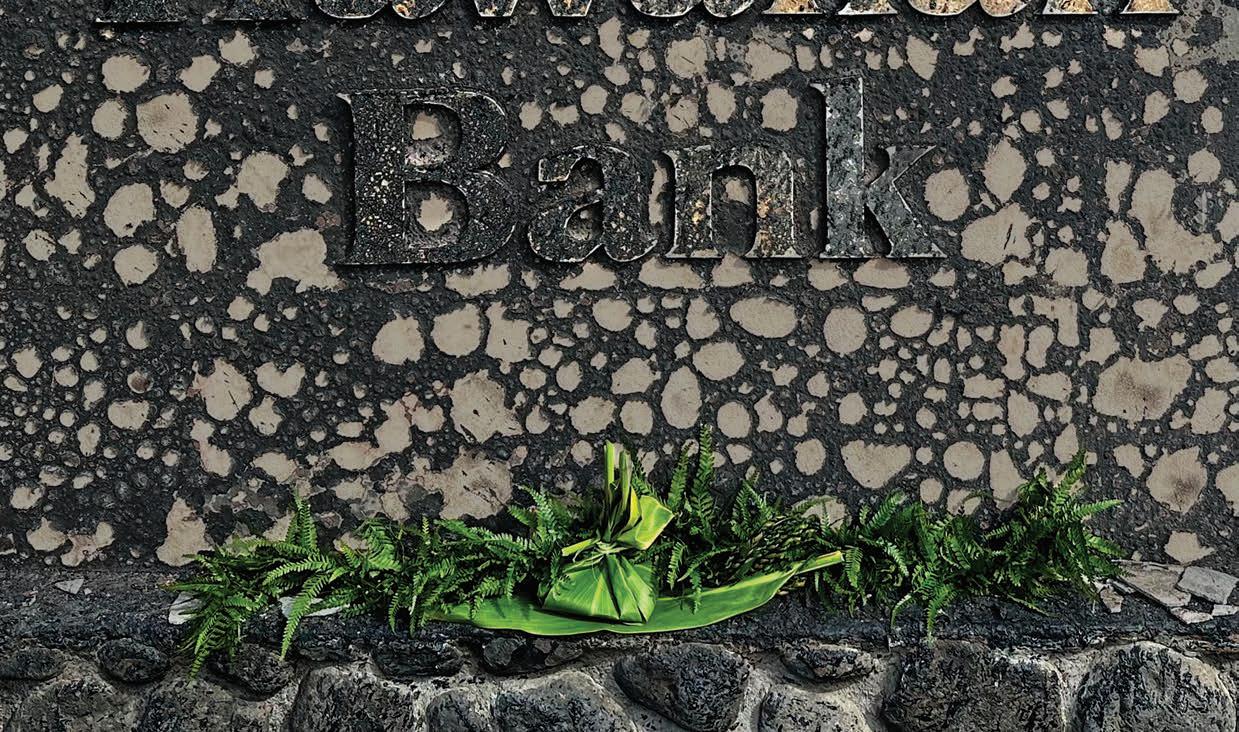
First Hawaiian Bank is proud to partner with the Hawaii Bankers Association to support the “Aloha for Maui” campaign. Contributions will be directed to the Hawai‘i Community Foundation’s “Maui Strong” fund, providing crucial aid and relief to those affected by the Maui wildfires.
Visit any of our 51 branches across the state or make an online donation at www.hawaiicommunityfoundation.org.

First Hawaiian Bank’s Community Care employee volunteer service program actively supports nonprofit organizations in their mission to provide essential programs and services to those in greatest need. Our dedicated employees and their families engage in meaningful activities that benefit our beloved island community.



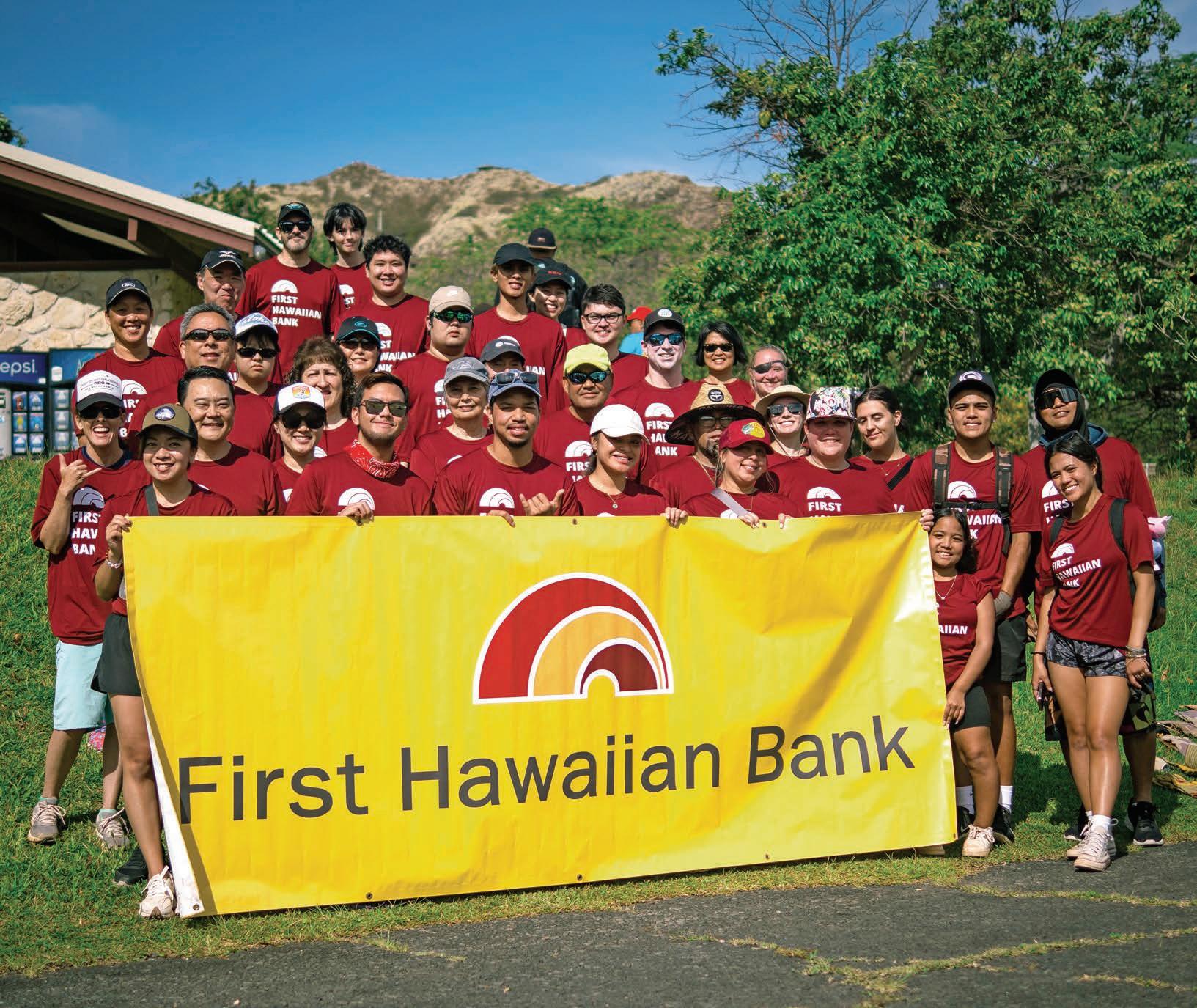
CELEBRATING THOSE WHO MAKE HAWAI ‘ I A BETTER PLACE
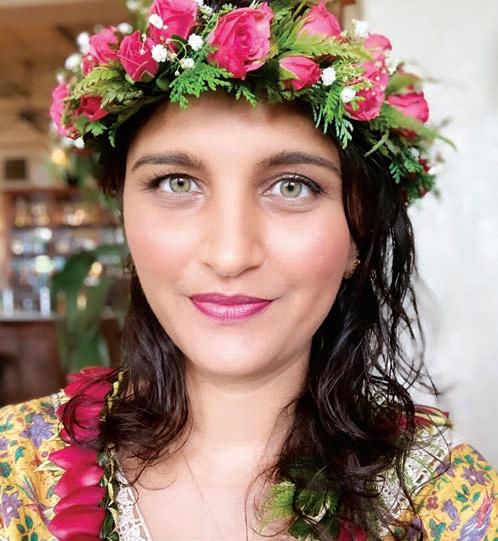



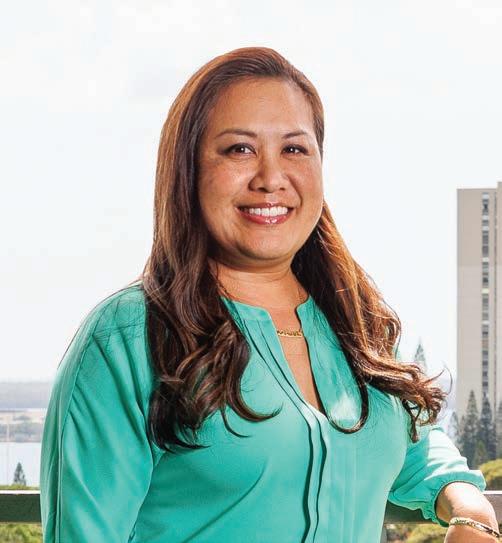


Effective nonprofit clients like Goodwill Hawai‘i, Make-A-Wish Hawai‘i, and the Center for Tomorrow’s Leaders understand that meaningful impact requires heart and expertise. Their compassionate work is as strong as the infrastructure and governance standing up their organizations:
Board members who roll up their sleeves to commit time, talent, and treasure. Gone are the days of cushy board seats. The need is too great.
Strong governance, financial management, and succession planning with strategic, focused missions to guide the work.
Creative and compelling storytelling in all forms and all media.
Emphasis on fundraising fundamentals. Building meaningful relationships leads to transformational gifts.

Community Impact Advisors serves as a connector and navigator in the fundraising sector, creating space for our partners to achieve greater philanthropic goals. We envision a world where joyful giving is an integral part of society and every nonprofit in Hawai‘i is financially sustainable.

47 Introduction
48 Dr. Sulma Gandhi Paulette V. Maehara Community Leadership Award
50 Nuestro Futuro Foundation Outstanding Foundation
52 Hawaii Dental Service Outstanding Corporation
54 Lynne Johnson Outstanding Philanthropist
56 Keoni Vaughn
Outstanding Fundraising Professional
58
The Garden Club of Honolulu
President’s Award (Co-recipient)
59 Aloha Shriners
President’s Award (Co-recipient)
60 Mahalo to Our Partners
• PRESIDENT’S AWARD (CO-RECIPIENTS): Aloha Shriners and The Garden Club of Honolulu TABLE OF CONTENTS


THIS YEAR THE AFP ALOHA CHAPTER CELEBRATES ITS 40TH ANNIVERSARY. More now than ever, we see the critical role our nonprofit organizations and partners play in the daily challenges of uplifting our community. In the face of tragedy and on the front lines of recovery, the devotion of our fundraisers and the passion of our generous donors are a kismet of opportunity. We are honored to have been witness to those stories. Our hearts and minds continue to be with Maui and to those who lost much more than many of us can comprehend.
Founded in Hawai‘i in 1983, the AFP Aloha Chapter is comprised of those mainly involved in nonprofit development, nonprofit management and fundraising consulting. The AFP is a chapter of the international organization Association of Fundraising Professionals, with members on O‘ahu, Maui County, Kaua‘i, and Hawai‘i Island.
Annually, the AFP Aloha Chapter celebrates the community’s inspiring and committed fundraisers on the frontlines, along with leaders in philanthropy who give not only their funding, but their time and talent as well, to make Hawai‘i thrive. Everyone can make a difference, whether with time, talent, or treasure.
The Chapter is delighted to welcome these outstanding awardees to a distinguished group of community leaders making a difference:
• OUTSTANDING CORPORATION: Hawaii Dental Service
• OUTSTANDING FOUNDATION: Nuestro Futuro Foundation
• OUTSTANDING PHILANTHROPIST: Lynne Johnson
• PAULETTE V. MAEHARA COMMUNITY LEADERSHIP AWARD: Dr. Sulma Gandhi
• OUTSTANDING FUNDRAISING PROFESSIONAL: Keoni Vaughn
NATIONAL PHILANTHROPY DAY COMMITTEE
Michelle Morihara, CFRE, President of the AFP Aloha Chapter
Angela Britten, Chair, NPD Award’s Committee
Connie Choy, NPD Co-Chair
Jacqui Sovde, NPD Co-Chair
Ryan Catalani, NPD Committee
EXECUTIVE PUBLISHER
Steve Petranik
CO-PUBLISHER
Kent Coules
CREATIVE DIRECTOR
Kelsey Ige
SENIOR ACCOUNT COORDINATOR
Rebecca Brooking
ACCOUNT EXECUTIVES
Pam Saito
Mea Aloha Spady
CONTRIBUTING WRITER
Cynthia Sweeney
The 2023 NPD Awards is published by Hawaii Business Magazine, in partnership with AFP Aloha Chapter, November 2023.
©2023 by aio Media Group, 1088 Bishop St., Suite LL2, Honolulu, HI 96813.

- PAULETTE V. MAEHARA COMMUNITY LEADERSHIP AWARD -
FOR MORE THAN TWO DECADES, Dr. Sulma Gandhi has been working to improve lives across Hawai‘i as a social entrepreneur and innovator dedicated to healthy outcomes.
Gandhi is the founder of Conscious Communities, which provides groundbreaking programs to empower individuals and organizations to practice collective responsibility toward eliminating violence and promoting safe and respectful environments.
With experience in health and human services in both nonprofit and public organizations, Gandhi has witnessed how barriers to health care for individuals can result in significant preexisting health conditions and inequitable representation, which can then extend to factors such as education, occupation, transportation, and housing.
In 2021, Gandhi joined the Stupski Foundation and serves as the health program officer, leading investments in Hawai‘i that are focused on critical areas of maximizing early brain development and improving serious illness care. Her passion, she says, is building diverse, equitable, and inclusive communities for a thriving Hawai‘i.
“Hawai‘i’s diverse cultures, community exper-
tise, and lived experiences are critical to improving health outcomes and social equity,” Gandhi says. “I am grateful to find alignment in the Foundation’s vision that all people have the opportunity to enjoy a life marked by dignity, connectedness, and caring.”
Gandhi is also a reiki master, and holds a M.A. degree in science from the University of Victoria, Canada, and a Ph.D. in business with a focus in health care management and leadership.
Of her many community services, Gandhi serves on the Hilo Medical Center Foundation Board, Hawai‘i Suicide Prevention Taskforce, Safe Spaces and Workplaces Initiative, and the Early Childhood Action Strategy. She was also the recipient of the Chamber of Commerce’s Athena Award, which recognizes women’s contributions and leadership in business and community service. She was also chosen as an Omidyar Fellow through the Hawai‘i Leadership Forum.
Gandhi says she is the proud daughter of Indian immigrants, loves to travel, compose poetry, and delights in the authentic foods and art of diverse cultures. She and her partner are parents of twin young adults, and you can find her ‘ohana hiking at Volcano National Park and exploring the ‘āina and wai of Hawai‘i.

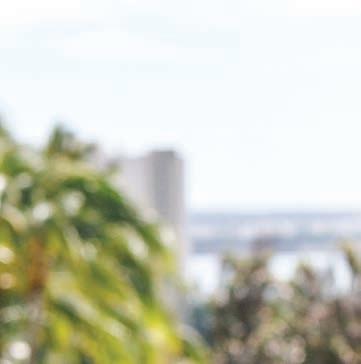

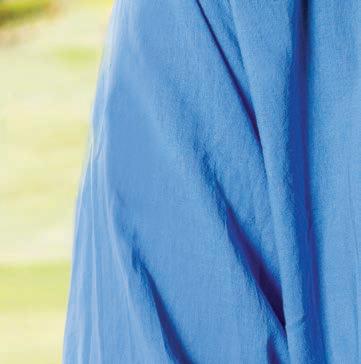




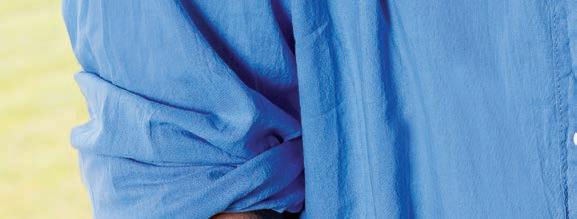

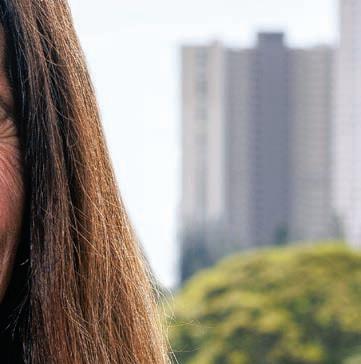






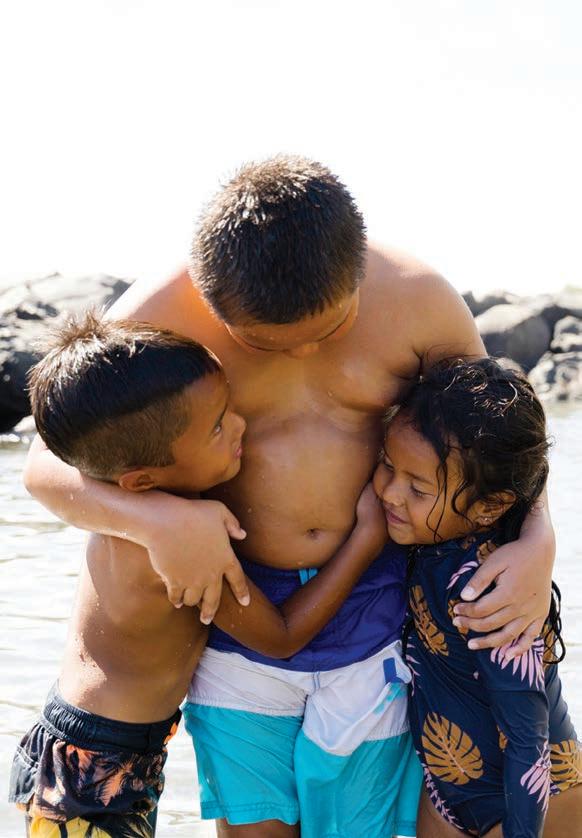

THE ORIGINS OF NUESTRO FUTURO FOUNDATION began over twenty years ago when the founders, Peter Hagedorn and Miriam Trahan, created technology centers for youth in Bolivia. Since 2009, Nuestro Futuro has dedicated its philanthropic work to supporting Maui Nui, focusing on addiction recovery, education, community
building, and food security. Abigail Perrin is the Executive Director of Nuestro Futuro Foundation, and in her role she emphasizes the importance of connection, collaboration, and belief in the catalytic possibilities of effective philanthropy. Abigail received her B.A. from UH Manoa and her M.A. in Philanthropic Studies from The Lilly Family School of Philanthropy IUPUI. On behalf of the Nuestro Futuro Foundation, she serves on the Advisory Board for the Funder Hui and as co-chair for the Food and Farmer Funders Working Group.
At the very heart of Nuestro Futuro’s work is the importance of listening and supporting organizations that will have a multiplier effect in the community. Since 2021, Nuestro Futuro has partnered with Hawai‘i Public Health Institute to provide a 50% match for a full-time Maui County Food Access Coordinator tasked with improving the food system in Maui County and
increasing access to fresh local foods, especially for populations experiencing food insecurity. This has proven so beneficial, that in 2023 the newly formed Maui Department of Agriculture is onboarding a full-time Food Access Coordinator to serve Maui County. This is a great example as to how philanthropy can provide the risk capital to support positions that can later be adopted by government if proven effective.
Through community feedback, Nuestro Futuro became acutely aware of many pressing issues Maui faced that were not receiving the exposure they deserved. To address this, the foundation initiated a funding partnership with Civil Beat to support a full time investigative reporter for Maui County. With all of the many events that have affected Maui over the last two years and specifically the most recent wildfires, this has been an enormous benefit to the Maui community as many voices are being heard and issues being brought to light that may have otherwise been ignored.






In response to the devastating wildfires on Maui, HCF is suppor ng a ected communities through the Maui Strong Fund by providing financial resources for immediate and long-term recovery needs.

HAWAII DENTAL SERVICE WAS FOUNDED IN 1962 by 15 local, pioneering dentists who had a strong commitment to provide quality dental care to the community. It now serves nearly one million customers across Hawai‘i islands. As a nonprofit dental service corporation, its customers represent the islands’ diverse residents, industries, companies, unions, associations, nonprofit organizations, Medicaid beneficiaries, and those enrolled in HDS individual plans.
HDS continues working to elevate oral health in the islands with philanthropy through its HDS Foundation and direct corporate gifts. Since 1975, HDS and the HDS Foundation have provided almost $5 million in philanthropic support to University of Hawai‘i programs, more than three quarters of that in the past two years alone. This includes a $2.25
million gift to establish an endowment for a new part-time faculty position at the University of Hawai‘i at Mānoa John A. Burns School of Medicine.
Matthew Oishi, a public health dentist at Kōkua Kalihi Valley, is the inaugural oral health director, charged with developing an innovative oral health curriculum for aspiring physicians during their four years in medical school. The program includes lectures, workshops, and clinical training in JABSOM’s H.O.M.E. (Houseless Outreach and Medical Education) program where students learn about oral assessments, dental referral issues and management of acute dental problems.
In addition, HDS gave $1 million to endow a scholarship for students enrolled in dental hygiene programs at UH Mānoa, the UH Maui College Dental Hygiene Program and Oral Health Center, and the Kapi‘olani Community College Dental Assistant Program.



RTS AND MUSIC THRIVE in Honolulu today, thanks in part to the contributions of Dr. Lynne Johnson.
Serving as executive director of the Honolulu Academy of Art (an unpaid position) she helped steer merger discussions with the Academy and The Contemporary Museum in 2010, to join the two museums and create a financially strong museum for Hawai‘i.
As board chair of the Honolulu Symphony Society, Johnson also guided the society through a difficult period of financial challenge by managing to keep the Society afloat from 1994-1997, keeping musicians paid and the music going.
Johnson earned a Ph.D. in musicology from UH Mānoa in 2009, and now teaches music history. She is a board member at Manoa Heritage Center, was a recipient of the YWCA’s Leader Award in 1997, and was recognized as Outstanding Volunteer Fundraiser by AFP in 1998. In addition, Johnson co-produces “Chasing the Light,” a weekly inspirational column in MidWeek Magazine.
Along with keeping music in the community alive, playing music is Johnson’s other passion, and she says she plays piano every day.


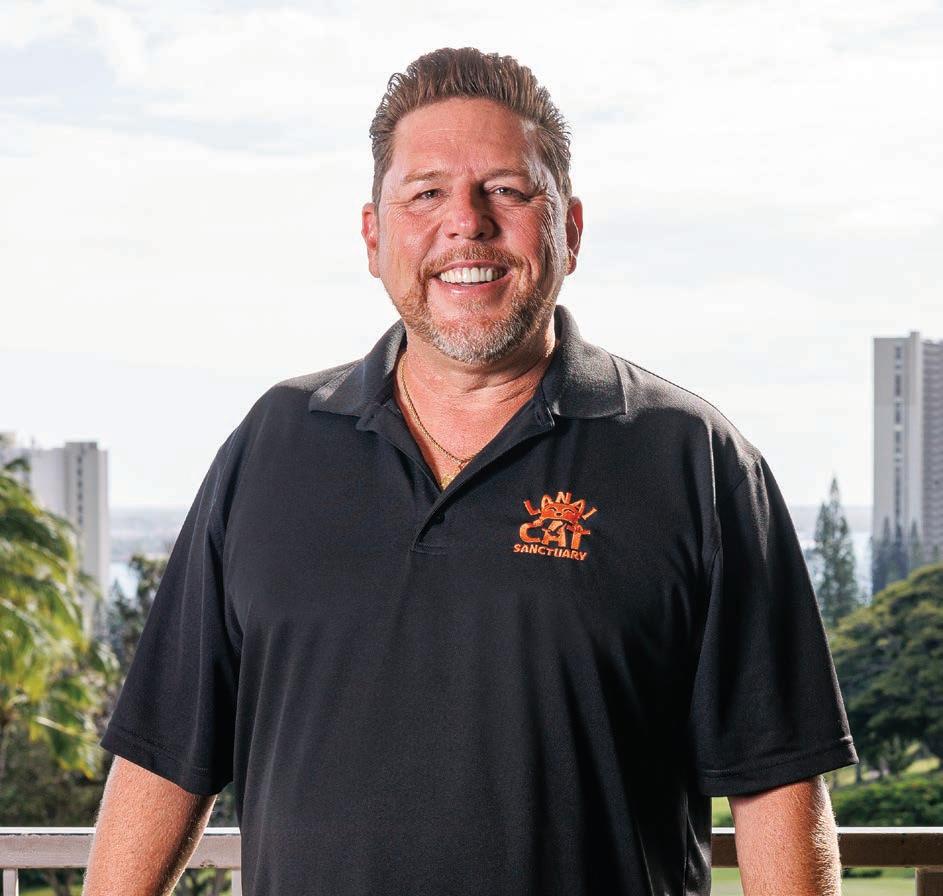
T THE LANAI CAT SANCTUARY, Keoni Vaughn has served as executive director since 2014, and oversees a staff of 12 who care for more than 650 cats on a daily basis. Under his direction, the Sanctuary is also positioned as the number one visitor attraction on the island. Vaughn specializes in finding common ground on opposing views regarding conservation efforts for native and endangered birds and feral cats. In addition, this past May, Vaughn started up a mobile veterinary clinic called Lanai Veterinary Care that provides the island’s only access to veterinary care for pets including a free spay and neutering program for all pets on island year-round.
Born and raised on O‘ahu, Vaughn has worked in animal welfare for nearly 20 years. Prior to joining the Sanctuary, he served as the Vice President and Director of Operations of the Hawaiian Humane Society
Society where he oversaw a staff of 50, ran the admissions, shelter adoptions and partnerships, lost and found and animal care services at Hawai‘i’s largest shelter, where more than 30,000 animals would arrive in need every year. Before that, he served as head of the organization’s investigations and rescues division where he busted puppy mills, fought for stronger animal protection laws and worked with prosecutors and police to bring animal abusers to justice.
“...he busted puppy mills, fought for stronger animal protection laws and worked with prosecutors and police to bring animal abusers to justice.”
Vaughn has rallied a following to the Sanctuary’s social media platforms through innovative content and engagement, as well as working with media including The Dodo, Bored Panda, Los Angeles Times, Expedia.com, huffpost.com, BuzzFeed.com, People Magazine, CNN Travel, and CBS Sunday Morning to create videos that have gone viral with over 35 million views.
Vaughn also served on the Board of Directors (past-president) of CrimeStoppers Honolulu from 2009-2022 and is a board member of the Friends of Court Appointed Special Advocates for foster children, and a board member of the FBI Honolulu Citizens Academy Alumni Association, which helps the FBI support community outreach activities.
Born and raised in Waimānalo, he lives with his wife Jacque and son Hunter in Hawaii Kai.
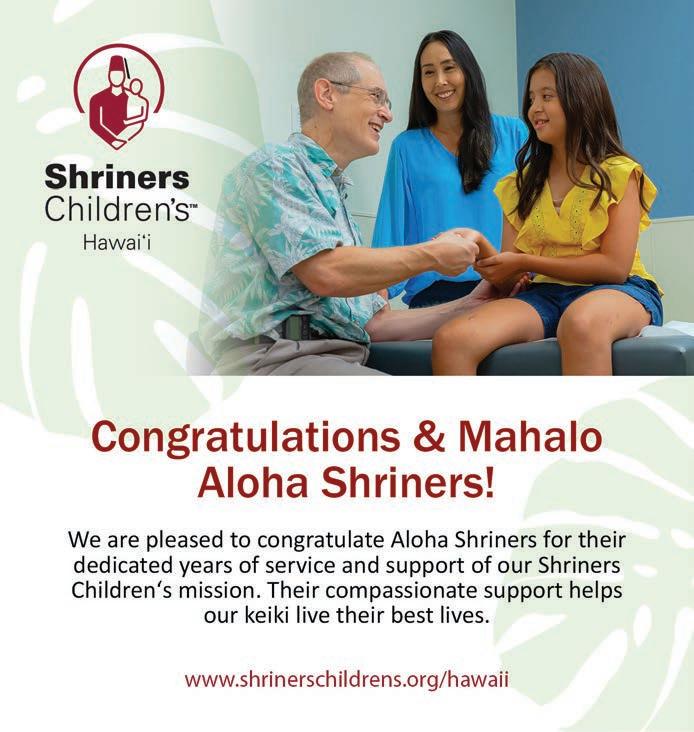

Kamehameha Schools founder Ke Ali‘i Bernice Pauahi Pākī Bishop was a visionary, role model and philanthropist dedicated to supporting others. Through the support of alumni, individuals, foundations and corporations, the Pauahi Foundation continues Ke Ali‘i Pauahi’s legacy by uplifting ‘ōiwi leaders who are empowered, unified and prepared to solve the issues facing Native Hawaiians and our communities. Learn more at pauahi.org

MĀLAMA ‘ĀINA IS THE PREVAILING PRINCIPLE of The Garden Club of Honolulu, which has consistently embraced this ethos for nearly a century.
In June, TGCH presented the “Beyond the Reef” Flower Show at the Honolulu Museum of Art, focusing on marine conservation. About 90 horticultural specialists flew in from across the country to judge spectacular displays of horticulture, flower arranging, photography, botanical jewelry, and needle arts.
TGCH was established in 1930 by a dedicated and passionate group of exclusively women garden enthusiasts. They began by visiting each other’s gar-
dens and inviting specialists to share insights on things like fertilizers and tools, then created friendly competitions to showcase the most extraordinary hibiscus blooms and roses.
The inaugural TGCH Flower Show took place in 1931 at the Honolulu Academy of Arts, now known as the Honolulu Museum of Art, and within a year gained membership in the national Garden Club of America.
Throughout the 1950s, the club’s activities grew along with Hawai‘i’s expanding global presence. Annual flower shows and public beautification initiatives enriched the beauty of O‘ahu while deepening horticultural knowledge.
In the 1960s and 1970s, member-
ship in TGCH continued to grow, and it evolved into a community partner dedicated to preserving Hawai‘i’s natural splendor. The club continued to welcome expert speakers from both local and international backgrounds, educating its members and the community. It also invested in enhancing various public spaces through hardscape and landscape improvements.
In 1989, the flower show stood out by celebrating Hawai‘i’s cultural diversity through exhibits of horticulture, floral design, photography, and botanical arts. The Flower Shows have evolved to encompass showcases of sustainability and environmental protection efforts.

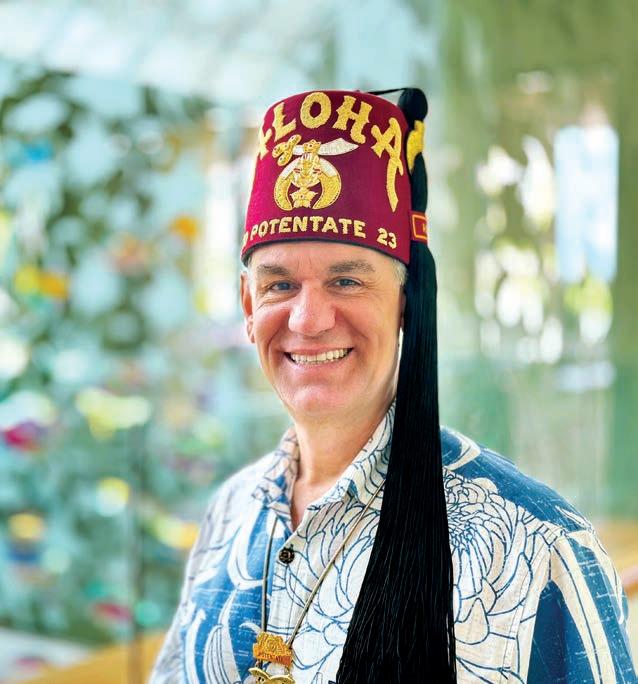
THE ALOHA SHRINERS FRATERNITY helps keiki worldwide receive much needed pediatric care from the team of professionals at Shriners Children’s Hawai‘i through its Patient Transportation Fund.
The 650-member fraternity contributes about $250,000 each year, which is used towards air and ground transportation for keiki and their chaperone to and from the neighbor islands, Pacific Basin countries and territories, and other faraway places.
With chapters on O‘ahu, Kaua‘i, Maui, and Hawai‘i Island, as well as Guam, Japan, Korea, and American Samoa, Aloha Shriners hosts many fundraising events at its Shriners Beach Club in Waimānalo, which is the backbone of their extensive fundraising and community awareness activities.
Many members of the fraternity also
make additional personal donations in support of Shriners Children’s Hawai‘i’s mission, which helps keiki with specialized orthopedic conditions live their best lives regardless of a family’s ability to pay.
Shriners International is a worldwide fraternal organization of men dedicated to brotherhood, compassion and service to others, and is known for its philanthropic efforts. In Hawai‘i, Shriners’ roots date back to King Kalākaua who became a Shriner in San Francisco just days before his passing in 1891.
Internationally, more than 200 Shriners Centers across North America, South America, Europe, and Southeast Asia host a wide array of fundraising events throughout the year — all in support of Shriners Children’s, a network of 20 healthcare facilities in the US, Mexico, and Canada.



Association of Fundraising Professionals Aloha Chapter

- MAHALO TO OUR PARTNERS -
PARTNER SPONSOR:
Hawai‘i Community Foundation
MEDIA PARTNER: Hawaii Business Magazine
SUPPORTER SPONSORS:
Community Impact Advisors
Hawaii Dental Service (HDS)
Kamehameha Schools/ Pauahi Foundation
Shriners Children’s Hawai‘i
University of Hawai‘i Foundation
FRIEND SPONSORS:
Cooke Foundation, Ltd.
HEMIC Foundation
Howard Hughes Co./Ward Village
Lanai Cat Sanctuary
Maryknoll School Matson
Mid-Pacific Institute

Every year, thousands of Hawaiʻi families experience the hardships of a system that doesn’t work for them. Despite being hardworking individuals and families, staying above the poverty line is a daily struggle. This is the reality for our ALICE (Asset Limited, Income Constrained, Employed) households.
In 2022, Aloha United Way (AUW) and the Hawai‘i Community Foundation (HCF) joined forces to lead the ALICE Initiative, addressing the financial insecurity affecting nearly half (44%*) of local households.
OUR VISION: We envision a Hawaiʻi where every individual and family thrives economically and culturally, enjoying generational prosperity while calling Hawaiʻi home.
The ALICE Initiative is committed to enhancing financial and social stability for ALICE households. In Year One, we:
• Organized 17 local nonprofits to build a movement to empower ALICE families, increasing partnerships, collaborations, and referral services by 233% among this network.
• Established a foundation for collective impact, with 96% of grantees engaging in advocacy to increase wages and benefits, and scale programs that are proven effective in supporting this work.
• Served a total of 15,741 individuals. Participants benefitted from resources like job training, matched savings, and financial education to help increase income, housing stability, and to reduce expenses.




Twice a year, Hawaii Business Magazine asks Anthology Research to conduct two surveys of local residents: the BOSS Survey of business owners and executives, and the 808 Poll of the general public. Here are the latest results, with occasional quotes from survey respondents.
BY STEVE PETRANIK
Survey participants were presented with this statement: In recent years Hawai‘i has seen many investigations and convictions for corruption of our public officials, including elected politicians, a police chief and civil servants.
Participants were then asked which of the following options best mirror their personal views on the topic.
These cases are just a tiny percent of the many corrupt officials we have in Hawai‘i
These cases are a real problem, but I believe the vast majority of public servants act honestly and without corruption
I feel we need more investigations to find out how much corruption does or does not exist
dk/da*
Note: Percentages don’t always add to 100 due to rounding.
*dk/da: Didn’t know or didn’t answer
HIS JOB PERFORMANCE
People in both surveys were presented with the following statement: Gov. Josh Green issued an emergency proclamation on housing that suspends many regulations with the goal of spurring construction of lower-priced homes for Hawai‘i residents.
They were then asked which of the following options best mirror their personal view on the proclamation. (Note: Both surveys were completed before the governor revised the proclamation in mid-September to restore environmental reviews, historic preservation laws and Sunshine Law requirements.)
Note: Percentages don’t always add to 100 due to rounding. *dk/da: Didn’t know or didn’t answer
People in both surveys were asked to rate the governor’s job performance so far. They were given these five options:
Note: Percentages don’t always add to 100 due to rounding.
Survey participants were given this statement: A recent U.S. Supreme Court decision has changed how guns are regulated in Hawai‘i. The ruling appears likely to make it easier to buy and carry guns in the Islands.
They were then asked which of the following options best mirror their personal views on the topic.
Note: Percentages don’t always add to 100 due to rounding.
*dk/da: Didn’t know or didn’t answer
“There will be no shortage of obstacles in our collective futures. However, I trust the proud, resilient and caring people of Hawai‘i will continue to find ways to come together to show progress.”
- BOSS Survey Respondent
Survey participants were presented with this statement: The state Department of Transportation has a pilot program that uses cameras at busy intersections to photograph and ticket drivers who run red lights.
They were then asked which of these responses best mirror their personal views on the topic.
Note: Percentages don’t always add to 100 due to rounding.
*dk/da: Didn’t know or didn’t answer
THE BOSS SURVEY generates two indexes. The Performance Index measures changes over the past year in employment, gross revenues and profit before taxes among the companies surveyed. Did those measures go up, down or hold steady?
The Optimism Index reveals the business community’s outlook for the economic future of the Islands over the next year.
The latest three BOSS Surveys have shown similar results on the three major measures of business performance. Here are the results from the latest survey.
• Employment: 65% of the companies surveyed maintained the same staffing level over the past year, 19% increased staff and 16% cut staff.
• Gross Revenue: 43% of the companies surveyed enjoyed greater revenue in the past year, 28% were flat and 27% had less revenue.
• Profit Before Taxes: 34% achieved larger profits before taxes in the past year, 30% held steady and 33% suffered lower profits before taxes.
Of the business leaders surveyed, 26% said they believe the economy will improve in the coming year – more jobs, business growth, revenue growth. Meanwhile, 35% said it will remain flat and 38% fear it will worsen – fewer jobs, more bankruptcies, revenue loss. Of the businesses on Maui, 72% said things would get worse.
Again, both the 808 Survey and 808 Poll were taken in the weeks soon after the Lahaina fire.
*dk/da: Didn’t know or didn’t answer
Each survey participant was presented with this statement: The number of visitors arriving in Hawai‘i this year is running at about 94% of the peak tourism year of 2019, when more than 10 million visitors came.
They were then asked which of these statements best mirror their personal views.
Business leaders were asked to characterize their companies’ prospects over the next two years using these options.
“Unprecedented uncertainty for the second time in just a few years after the Maui fire is hard on all stakeholders.”
Note: Percentages don’t always add to 100 due to rounding. *dk/da: Didn’t know or didn’t answer
BOSS – the Business Outlook and Sentiment Survey – is a statewide survey of business owners, senior executives and other company representatives. The 808 Poll is a survey of the general public in Hawai‘i. Both are conducted twice a year for Hawaii Business Magazine by the research team at Anthology Marketing, now part of the global agency Finn Partners.
For the BOSS, a total of 404 random interviews were conducted on the four most populated Hawaiian Islands from Aug. 15 to Sept. 13, 2023,
after the tragic fire in Lahaina. A sample of this size has a margin of error of plus or minus 4.88 percentage points with a 95% level of confidence.
A survey within the main BOSS Survey involved interviews with business leaders who describe their companies as generating significant revenue from the tourism industry.
A total of 111 leaders were surveyed in this segment; their responses were also included in the main survey results.
In the 808 Poll, 463 members of the general public age 18 and
older were surveyed from Aug. 15 to 28, 2023. The margin of error for a sample of this size is plus or minus 4.55 percentage points with a 95% confidence level.
Thirty-five of the BOSS respondents live on Maui; 26 of them help lead companies in the tourism industry. Fifty-five of the 808 respondents live in Maui County. These are small sample sizes, but we felt their collective responses were worth separating out on certain survey questions when they differed significantly from the overall responses.
Participants in the BOSS Survey of business owners, executives and representatives were presented with the following: Fears about a recession have diminished in recent months among some economists and business leaders; others still fear a recession in 2024.
They were then asked which of the following options best mirror their company’s plans for the near future.
INVESTING IN GROWTH WAIT AND SEE FOR NOW
WILL KEEP THE BUDGET TIGHT
SUBSTANTIAL CUTS IN SPENDING
Participants in both the BOSS Survey of business leaders and the 808 Poll of the general public were asked about their personal plans related to spending and budgeting in 2024.
Among the general public, 28% of men have little or no fear about spending in 2024 compared with 14% of women; 17% of women anticipate substantial cuts in spending compared to just 5% of men.
Note: Percentages don’t always add to 100 due to rounding.
Unsurprisingly, among the general public, the largest proportion of those with restricted spending plans came from those in the lowest income tier – household income of less than $50,000 a year.
Respondents in both surveys were asked about the large military presence in the Islands. A similar strong majority in both groups endorsed the military's presence.
Note: Percentages don’t always add to 100 due to rounding.
*dk/da: Didn’t know or didn’t answer
Overall, good for Hawai‘i and its people
Overall, bad for Hawai‘i and its people
Overall, good for Hawai‘i and its people
Respondents from both surveys who live on O‘ahu were asked: With the first leg of the Honolulu rail system now open, please choose one of the following statements to best describe your use of Skyline.
Overall, bad for Hawai‘i and its people
Respondents in both surveys were asked if they have sons of football playing age or younger, or plan to have children in the future. Of the business representatives, 229 said yes as did 282 among the general public. We asked those people which of the following best represented their stance on allowing their son(s) to play this sport.

Will never ride it I am opposed to my son or a future son playing football
Will use it regularly or already have
Will use it once in a while or from time to time
Will eventually try it once
Have already ridden once on it but won’t ride again
dk/da*
*dk/da: Didn’t know or didn’t answer
I have encouraged at least some of my sons to play football in the past I would encourage my son/future son to play football I have or will leave the decision entirely up to my son(s)






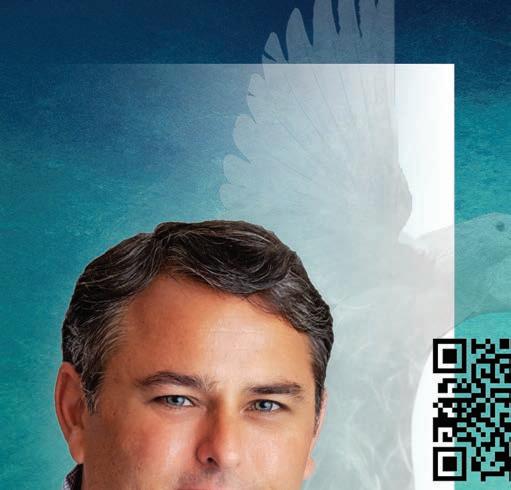









PRESENTED



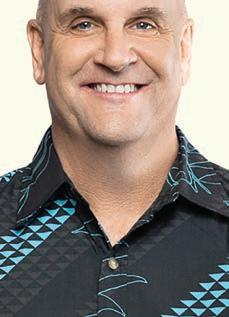
Peter Dames Servco Pacific Inc.





Rick Ching Servco Pacific Inc.




Peter Ho Bank of Hawai‘i

ENT-146-23 Genric_half page ad REV.qxp_Layout 1 10/4/23 5:21 PM Page 1
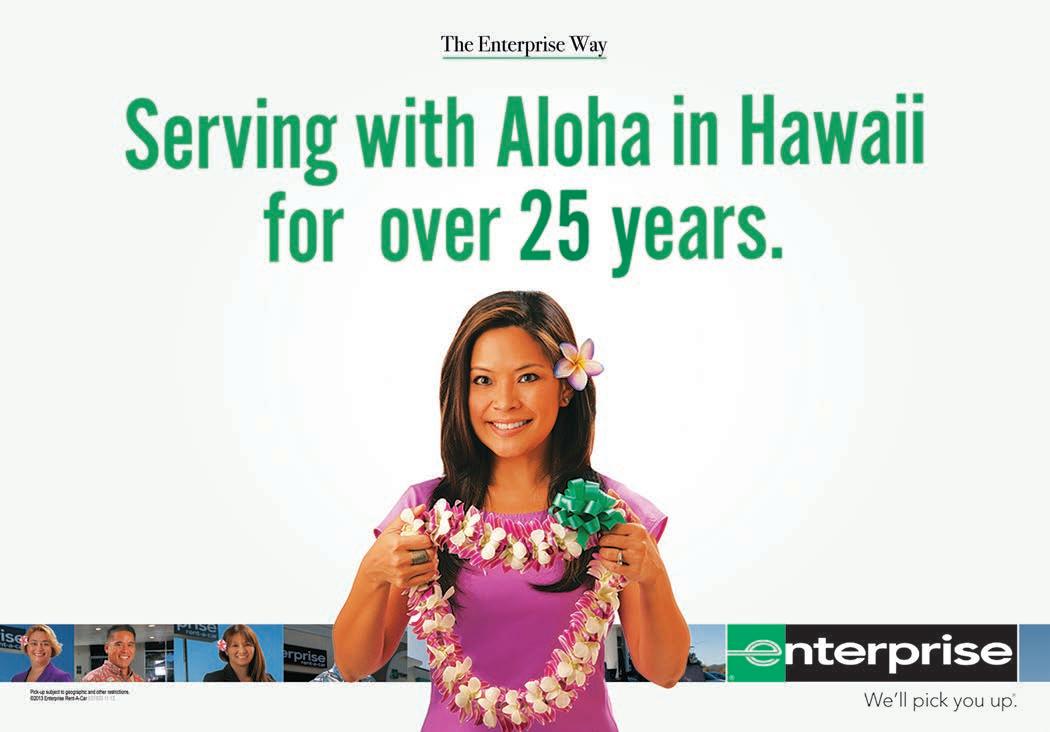


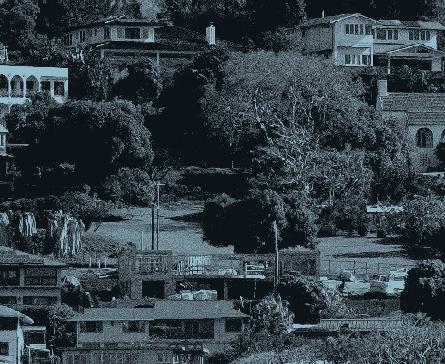


What’s holding us back and what’s needed to move forward and create more housing in Hawai‘i for working residents.
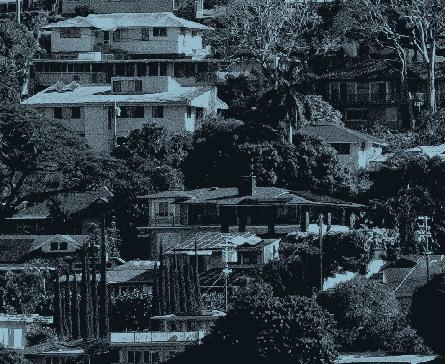
Hawaii Business Magazine hosted an informative and engaging panel discussion on what’s needed to create more housing in Hawai‘i for working residents. The event on Wed., Sept. 20 at YWCA Laniākea’s Elizabeth Fuller Hall raised awareness and identified solutions for housing challenges. Mahalo to our attendees, panelists and sponsors for making it a great success.
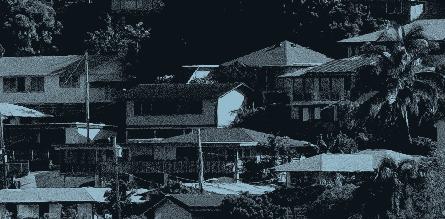
MAHALO TO OUR SPONSORS & PARTNERS



“The lack of affordable housing is not just a housing problem – its negative impacts are compounded on our community now and on future generations. If basic housing is not available, our workforce will have no choice but to leave our Islands, as many already have.”
“In the midst of this crisis, however, I am encouraged by the passion and energy of our business leaders to truly make a difference in our housing supply. It demands a collective effort, creative thinking and open minds to explore and embrace a multitude of different solutions.”

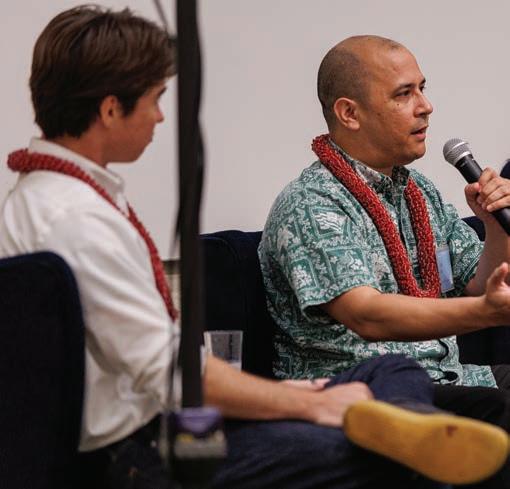




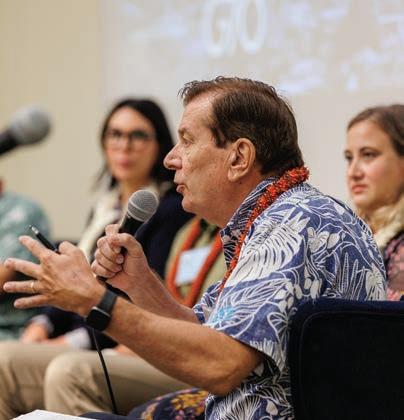



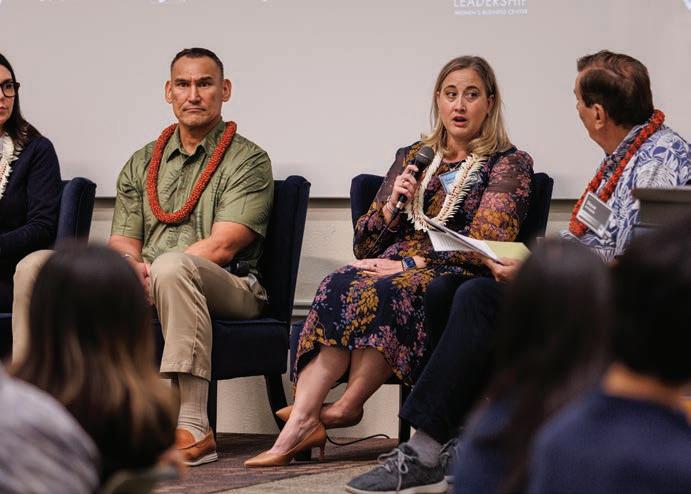

“American Savings Bank is committed to helping solve Hawai‘i’s growing affordable housing crisis and empowering kama‘āina to achieve their dream of homeownership. By joining forces with Hawaii Business Magazine and the discussion panelists, we continue to foster essential conversations and solutions to build thriving communities for generations to come.”
“IPA is proud of our partnership with Hawaii Business Magazine and the unique, mutually beneficial opportunity it provides our students to engage with our state’s business leaders.”
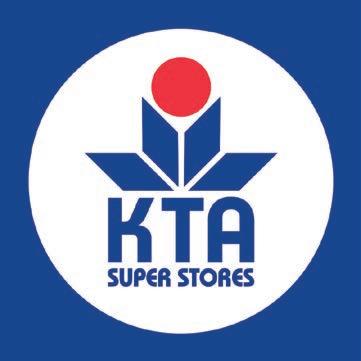


Seven kūpuna who continue to make a difference in the community

This prolific volunteer made community service a main driving force in his life while navigating a busy, diverse career
Remember those ads about the Most Interesting Man in the World? John Henry Felix, Ph.D., has a résumé and life so intriguing, it might make that guy jealous.
Felix’s CV includes being chief of staff for William Francis Quinn, the Islands’ last territorial governor and first state governor. Felix was chair and CEO of America’s first revolving restaurant, the La Ronde, built in 1961 atop the Ala Moana Building, and later expanded its parent company to 12 restaurants nationwide.
He helped found and then chaired Hawai‘i Public Radio’s first board. And he worked in labor relations with the Teamsters Local 996 and Hotel and Restaurant
Employees and Bartenders
International Union, Local 5. And he was on the faculty at Oxford University. He’s also penned multiple books, served on the City Council, and been awarded honorary titles by the governments of Guam, Portugal and Spain. And, of course, he is an Eagle Scout.
At age 93, Felix is the executive chairman at Hawai‘i Medical Assurance Association and still goes into the office twice a week. A bad fall slowed him down in June, he says, but he’s slowly getting back to normal.
Born on O‘ahu, Felix’s distinguished career in service started at age 8, when his mother encouraged him to become active with the March of Dimes, Red Cross and Boy Scouts. “I’ve been involved in
all three for 85 years,” Felix says. “My mother was very religious and devoted to the community, to worthy causes.”
Over the years volunteering with the Red Cross, he has worked on behalf of refugees in Africa, Timor and Southeast Asia. He also created a system for blood donations in remote parts of the Pacific and helped establish a prosthetics factory to serve mine victims in Cambodia.
He is a decorated Korean War Army veteran, and also served in the Hawai‘i National Guard. In 1986, his donation of 30 acres of land led to the creation of the Hawai‘i State Veterans Cemetery in Kāne‘ohe. He remains passionate about veterans’ issues, volunteering with the Homeless Veterans Task Force.
A married father of five, Felix lives in ‘Āina Haina. How does he keep up with a busy life, despite his nine-plus decades? “I keep physically fit, 100 pushups a day,” he says. “Even after my injury, I’m back up to 50 pushups.” His exercise regimen also includes stretching, weightlifting and calisthenics, and, he says, maintaining a good mental attitude helps too.
“We have but one life to give,” he reflects, “to our country, our community, and I plan to make the most of those precious years. I want to keep working on serving veterans, and on health issues, making people aware of the importance of maintaining good health and longevity. I hope to work until the day I take my last breath.”
- KATHRYN DRURY WAGNER
The former psychiatric social worker connects mental health treatment with Hawaiian cultural practices
When it came time to pick a major at the University of Oregon, Carol Malina Kaulukukui took inspiration from her father and chose social work. Her father, she says, worked for an insurance company, but on his own time, helped resolve conflicts in the community.
“The phone would ring every night, asking my father to help mediate. And so when I was looking to see what I wanted to be when I grew up, I just gravitated towards social work,” says Kaulukukui.
After college, she volunteered at a day treatment center for people with mental illnesses in Corvallis, Oregon.
“I became a psychiatric social worker. I worked with people with serious mental illness, including people with schizophrenia and unrelenting
bipolar disorder.”
Kaulukukui was asked to help write a grant for a residential program at the facility and though she had no experience with grant writing, she agreed. To her astonishment, the program was awarded a $1 million grant.
“They asked me to run the program, which I did. I got a lot of really good experience, but at some point, it was clear I needed to have a master’s,” she says. So she returned to school and got one, in social work from Portland State.
Kaulukukui then moved to Southern California, where she transitioned to private practice.
“Private practice was so confining and privileged,” she says. “My heart wasn’t there. The other thing that was happening was the part of me that’s Hawaiian was really missing home.”



She moved back to O‘ahu in 1992 and immersed herself in Hawaiian cultural practices.
“I went back to hula. I went back to Hawaiian language. I went back to ho‘oponopono, which is the cultural practice of spiritual healing, and then, interestingly enough, lua, the Hawaiian fighting art. All of these things came together in a way that was cohesive and nurtured my spirit.”
Her extensive knowledge of Hawaiian cultural practices provided valuable insights for a more holistic approach to social work and mental health treatment.
Now in retirement, she keeps busy as a kumu hula at two hālau, one in Kaka‘ako and the other at the Women’s Community Correctional Center in Kailua.
“When I submitted a proposal to teach hula at the prison, I called it ‘Hula as Healing’ because 99% of the women in prison have histories of trauma. Hula is all about storytelling, and part of healing is being able to tell your story to people who will listen with great aloha. You can’t just keep those awful stories inside, you have to be able to share it.”
Most of the dances are based on Hawaiian mythology, whose stories impart meaningful lessons that resonate with the women. For example, many dances are inspired by the dysfunctional family dynamics exhibited by Pele and her sister Hi‘iaka.
“These are the stories that these women have grown up with. And so when we dance the stories of Pele and Hi‘iaka, I say to them, ‘This is about Pele and power and control, about misplaced loyalty and betrayal. Who knows about these things? Who wants to tell their story of power and control relative to Pele?’ ”
Her students find catharsis in performing hula. It makes sense then that their beloved kumu hula’s Hawaiian name, Malina, means soothing and calming.
“I am so glad I’ve lived this long because I was not calm and soothing when I was a kid. I had to grow into my name,” says Kaulukukui, now 80.
“We all grow into our names. It’s not like we’re just automatically like that. Who wants to be given that value? I think working towards that value is what’s important.”
- RYANN NOELANI COULES
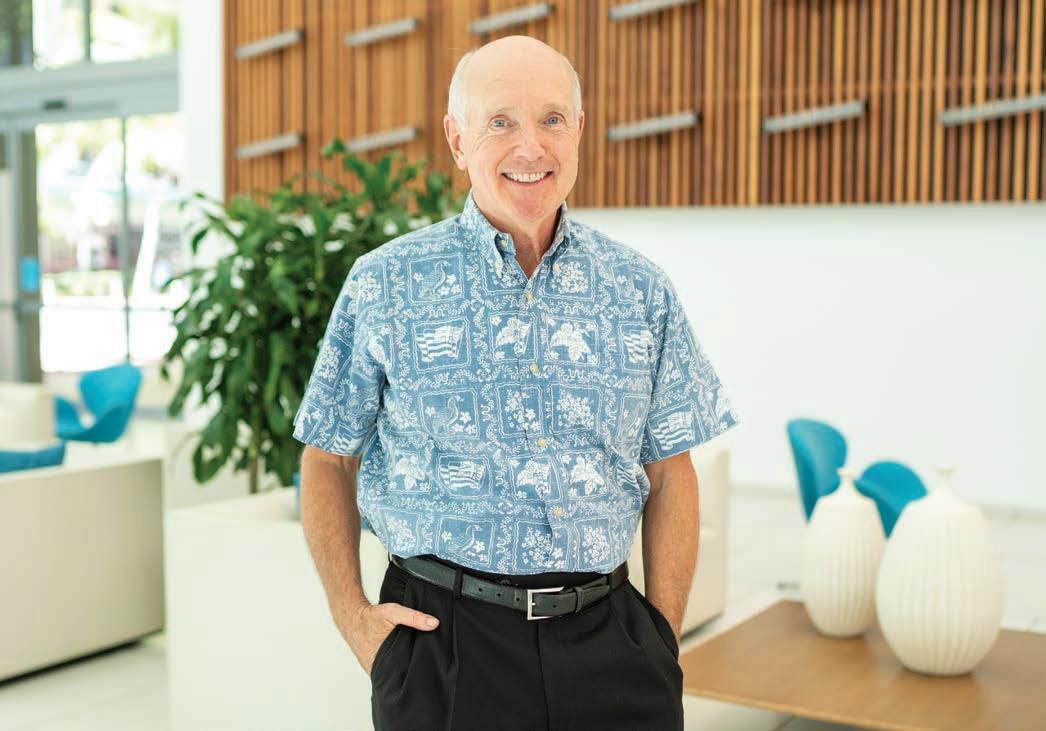
Longtime philanthropist proves a high-level finance career and a life of service can be a great match
John Dean was trying to learn Swahili. However, the universe, or at least the Peace Corps, had other plans, and he was sent not to East Africa, but to Western Samoa (now Samoa).
Finding himself as a volunteer in the country’s treasury department, he says he was fortunate to have
learning opportunities. “This was late 1960s, early 1970s, there was an anti-business movement in the U.S., but I came to the conclusion that not all business is bad. It’s a great tool and can be used to improve people’s lives.”
Later, he was accepted into Wharton School, where he earned a master’s in finance, and then started his
career at Bank of America.
Dean, now 76, grew up in Detroit, one of seven children, and attended a Catholic school. “It was a blue-collar neighborhood,” he says. “Meat and potatoes, fish on Friday and only on Friday!” Today, he and his wife, Sue, live in Waimānalo and have a second home in California.
After 30 years in the financial industry, where he earned a strong reputation for saving struggling banks, Dean came out of semiretirement in 2010 to work on the turnaround of Central Pacific Bank as chair and CEO. He steered the bank to profitability, earning the title of Hawaii Business Magazine’s CEO of the Year in 2012. Until recently he
was chairman emeritus and a director at CPB.
He remains managing partner at Startup Capital Ventures, an early-stage venture capital firm, but is winding that down as well. Dean is now focused on his season of service.
In truth, Dean has been involved in philanthropy for decades, dedicating many of his stock options at CPB to a charitable foundation, and serving on boards such as the Hawaiian Humane Society and ‘Iolani School. But his approach to service today is a bit different.
“I’ve evolved to wanting to spend less time on boards, more to working directly on projects,” he says. He is especially interested
in addressing homelessness, such as with Hui Mahi‘ai ‘Āina, a nonprofit in Waimānalo. He is also passionate about Ho‘ōla Nā Pua, a group dedicated to the prevention of sex trafficking and providing care for children who have been exploited.
“He’s a builder and a creator,” says Jessica Muñoz, CEO and founder of Ho‘ōla Nā Pua. “He’s been an incredible mentor.”
Muñoz met Dean during the capital campaign for the nonprofit that ran in 2016-17, which raised $10 million. “He could see there was a need in Hawai‘i, and around the globe, to deal with this issue,” Muñoz says. Even after the campaign, she says, “he continues to mentor me, and to make connections, ensuring we will have a strong impact.”
“John is genuinely very kindhearted, but he’s also very smart,” Muñoz says. “He’s brilliant when it comes to finance and in business, but also in how things intersect and correlate. That’s what makes him so powerful: his ability to connect so many sectors and to cross the divide with different groups within the community.”
When asked what he’s most proud of, Dean says, “I’d start with my marriage to Sue –51 years of marriage – and my daughters, my granddaughters.” Apart from them, he says he’s pleased to have been able to do his part to make “this world a better place.”
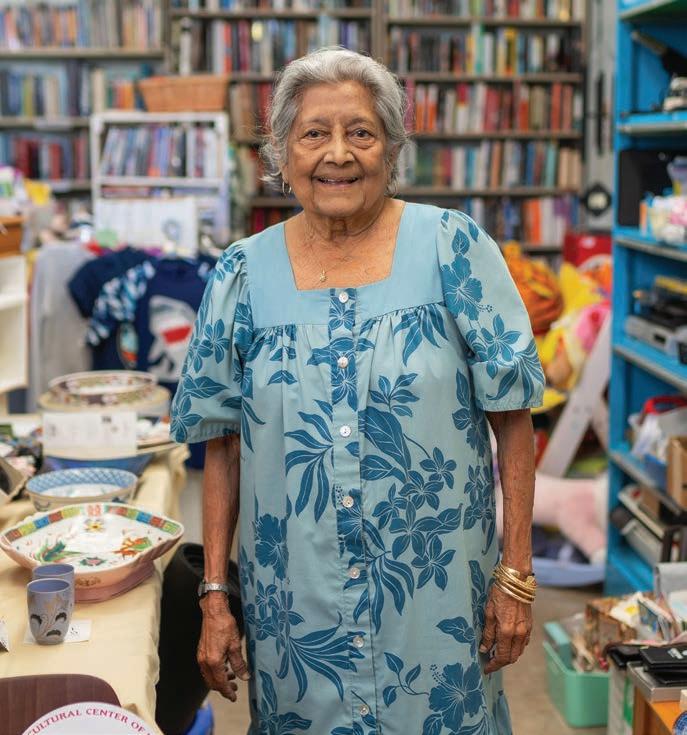
After a career as a librarian, this energetic 89-year-old volunteers in many ways and places. “I wasn’t brought up to sit and do nothing,” she says.
After more than 35 years of helping students as librarian of the Asia Collection at UH Mānoa’s Hamilton Library, Lynette Jagbandhansingh-Wageman has devoted the last 23 years to supporting her community.
and is in charge of membership.
She also volunteers at Friends of the Library, and with a passion for bromeliads, gives her time at Lyon Arboretum, where she served for years as president of the Hawai‘i Bromeliad Society.
- KATHRYN
“It’s an old expression but trying to treat people as you want them to treat you –you’d be surprised how well it works, especially if you are building a team. All organizations need to be demanding but also need to be caring. It’s not an oxymoron. You can be a demanding, caring organization.”
DRURY WAGNER
At 89, Jagbandhansingh-Wageman can regularly be found volunteering at the UH Mānoa Thrift Shop, where all proceeds go toward scholarships. The shop is run by the Women’s Campus Club, where Jagbandhansingh-Wageman serves as co-president
Before the pandemic, Jagbandhansingh-Wageman volunteered at the Hawai‘i State Art Museum as a docent, at First Friday Honolulu, and at Sharon’s Plants in Waimānalo.
“I just want to do whatever I can to make the world a better place,” she says.
While at UH, Jagbandhansingh-Wageman was active as president of the Association for Asian Studies, chair of the South Asian Committee, and presented papers at global conferences including at the Library of Congress, and other international library studies conferences.
She also served on the executive board for the Journal of Asian Studies, and in 1997 started an annual publication, Reference Sources on South Asia.
Jagbandhansingh-Wageman was born and raised on Trinidad in the West Indies, and traveled to the U.S. to study at Park University in Missouri. It was there that she first started working in a library.
She came to Hawai‘i in 1961, landing at the EastWest Center and playing an integral role in the transition of the institution’s collection to the Hamilton Library. She became Hamilton’s head librarian in 1991, and retired in 2001.
Along with writing numerous letters of support for students seeking recommendations, Jagbandhansingh-Wageman took a personal interest in many Southeast Asia students, helping them to adjust to life away from their native lands and families, inviting them to her home and to events she hosted, and even providing transportation when needed.
“That’s a long stretch for students to take all the courses, then write their (doctoral) paper. They would come to my office, I would help them define their subject, and take them home and feed them,” she says. “They wanted somebody to listen and know they care.”
Many students still keep in touch. Niti D. Villinger, Ph.D., a former associate professor of management at Hawai‘i Pacific University, was a student in the Southeast Asian studies program from 1985 to 1989 and the program’s newsletter editor.
“If I had a research paper or Southeast Asian related topic, she would make book or journal recommendations,” Villinger says. “Because of her own generosity, she had the capacity and time to help students from the Southeast Asian studies program and the EWC. She was interested in getting to know them, almost like a host family.”
Despite her age, and everything she’s accomplished, Jagbandhansingh-Wageman says she doesn’t think she’s doing anything special.
“I’m single, I have the time, and I don’t like to do housework,” she jokes. “I wasn’t brought up to sit and do nothing. I’m just an ordinary person. Whatever talents I have, I try to use them. If I feel I’m capable of doing it, I’ll do it.”
Jagbandhansingh-Wageman encourages others to volunteer, if only for a couple of hours a week. “As long as you’re able, you should be giving back to the world, to the community,” she says.
To this day, if it’s drizzling and she’s driving past a bus stop, she’ll stop and offer a ride to whomever’s waiting. “I want to help whoever comes my way,” she says. - CYNTHIA SWEENEY
After an unusual career path opened to her, this energetic advocate spent decades helping marginalized people access knowledge – and their own voices
"I
thought I was going to die; I was truly scared,” Deanna Espinas recalls of her 1981 hiring by the Hawai‘i Department of Public Safety.
She’d earned a master’s degree in library studies and was hoping to work in a school, but positions were scarce. So, she accepted a job as a correctional facilities librarian. “My fear was that I’m a short woman … that I would be prey,” she says. But slowly, she found her place, figured out how to relate to the inmates and served their library needs.
Espinas, now 74, wound up working for more than three decades in correctional settings, retiring in 2014. She helped create and provide law library materials and tools for prisons throughout Hawai‘i. She also boosted recreational reading among inmates, collecting donations from the community of both used books and money to buy new ones.
She advocated for women in prison, connecting with nonprofits and experts on probationary issues, domestic violence and addiction. Espinas
also worked with Read to Me International on a program in which incarcerated parents record themselves reading books to their children; afterward, the books and recordings are sent to their kids.
These opportunities, she says, eventually made her realize that working in prisons was the life path she was meant to take. “I had to go this route. I’m glad I did. I’ve always wanted to say, what can I do, how can I get the materials that are needed?”
Born and raised in Honolulu, Espinas now lives in Pālolo Valley. “I grew up in a boarding house behind Tamashiro Market” in Kalihi, she says. Both of her parents were born in the Philippines and immigrated to Hawai‘i, and she joined the Filipino-American Historical Society of Hawai‘i in 2000, where she currently serves as secretary on the board.
She has also been the acting executive director and board president of Hawaii’s Plantation Village and remains a board member today, advocating especially for the Chuukese community. She is the board president for

Friends of the Library for the Blind and Print Disabled, and her spiritual life includes being a member of Keolumana United Methodist Church and Faith Action for Community Equity; she also serves on the Hawai‘i District Board of United Methodist Women.
Espinas says she naturally has a lot of energy, takes care of herself with Jazzercise, and credits her husband with doing the cooking and
housekeeping. Of her busy life in service, she laughs and says, “My family put up with it; I know no other lifestyle.”
She has two sons and three grandchildren and is about to become a great-grandmother.
Espinas is a board member and participates in productions for the PlayBuilders of Hawai‘i Theater Company, which stages communitycollaborative plays.
“Deanna is a great actress,
so creative and extremely present. We all learn from her,” says Terri Madden, the group’s founder, executive director and producer. “She’s always ready to step up and to have marginalized voices heard.” Espinas is performing in the ensemble’s newest production, “The Super Executive Aunties of the Mālama the Caregivers Collective.”
“We’ve been doing a lot of work about caregiving
and about aging,” observes Madden. “One of the things I have learned is that we don’t change that much as people as we age. If we are activists in our youth and middle age, we’re going to be activists later in life as well. … And you just don’t want to waste time. You want to make as much of a contribution to your community as you can. That’s what Deanna is doing.” - KATHRYN DRURY WAGNER
One of the premier artists in Hawai‘i has maintained artistic vigor for more than seven decades
"Imake art every day, unless I’m physically unable to,” says painter and sculptor Satoru Abe, now 97.
“Looking back at the past 77 years since I’ve been an artist, I cannot believe what I’ve done. I painted, sculpted in metal and wood, made jewelry and painted laser engravings.”
Born in Honolulu and raised in what he calls a “non-artistic environment,” Abe took art lessons while attending McKinley High School but yearned to see more of the world. He studied at the California School for Fine Arts (which became the San Francisco Art Institute) and the Art Students League of New York.
“I traveled to New York and visited the Metropolitan Museum, copied the ‘Head of Christ,’ ” he reminisces. “I finished the painting, brought it home, and gave it away to someone who liked it.”
Today, he is internationally
recognized for his art and is best known for his abstract, natural forms. He received a Guggenheim Fellowship as well as a National Endowment for the Arts artist-in-residence grant, and his work can be found in the Smithsonian American Art Museum, the Whitney Museum of Art, the Honolulu Museum of Art, the Hawai‘i State Art Museum, in private collections, and throughout the state in numerous public works.
Abe says he doesn’t have a favorite sculpture or painting.
“To me, every piece I’m working on is my favorite piece.”
One of his best-known works – and most visible –is the sculpture ‘Enchanting Garden,’ which serenely rises out of a fountain at the First Hawaiian Center in downtown Honolulu. Walter Dods Jr., First Hawaiian Bank’s former CEO and a longtime philanthropist, was instrumental in selecting Abe for the job.
“Without a doubt I knew I wanted him to do a piece,”
says Dods. “I didn’t give him any direction. I just showed him the fountain.”
The two met around 1970. “I used to go to his home when he lived way, way back in Wai‘anae in a Quonset hut,” Dods recalls.
Dods has amassed a collection of about 150 artworks by Abe. “I think he’s a living treasure, I really do,” says Dods. “His art is unique. It’s special. And he’s such a humble guy. He’s very likable.”
Abe was part of “the Metcalf Chateau,” a group of young Asian American artists who first exhibited together in Honolulu in 1954. It included Abe, Bumpei Akaji, Edmund Chung, Tetsuo “Bob” Ochikubo, Jerry Okimoto and Tadashi Sato. Dods says Abe was “like the dean of the group.”
He has throughout his life been a supporter of up-andcoming artists, buying their works at shows.
Abe had a long marriage with Ruth Aiko Abe, a
textile designer, and he has a daughter, Gail Goto. Ruth died in 2001 after a long illness. He’d been her primary caregiver after she had an aneurysm and stroke in 1988, and even during that painful period, he continued to paint and sculpt.
It’s not easy being 97, though Abe is relatively healthy. He’s happy reading the daily newspaper and credits his longevity to being “optimistic about each and every day I’m alive. I face the day, wondering what I’ll do that day. I look forward to tomorrow.”
While he acknowledges that “art gives meaning to my life and to others,” he notes, “ I do my art not necessarily for others to understand. Art is an indulgence. I don’t look at impacting people with my art. I hope they like it, but it’s more personal satisfaction than anything else. I hope people see me as one of a kind, someone who has done things no one else has.”
- KATHRYN DRURY WAGNER
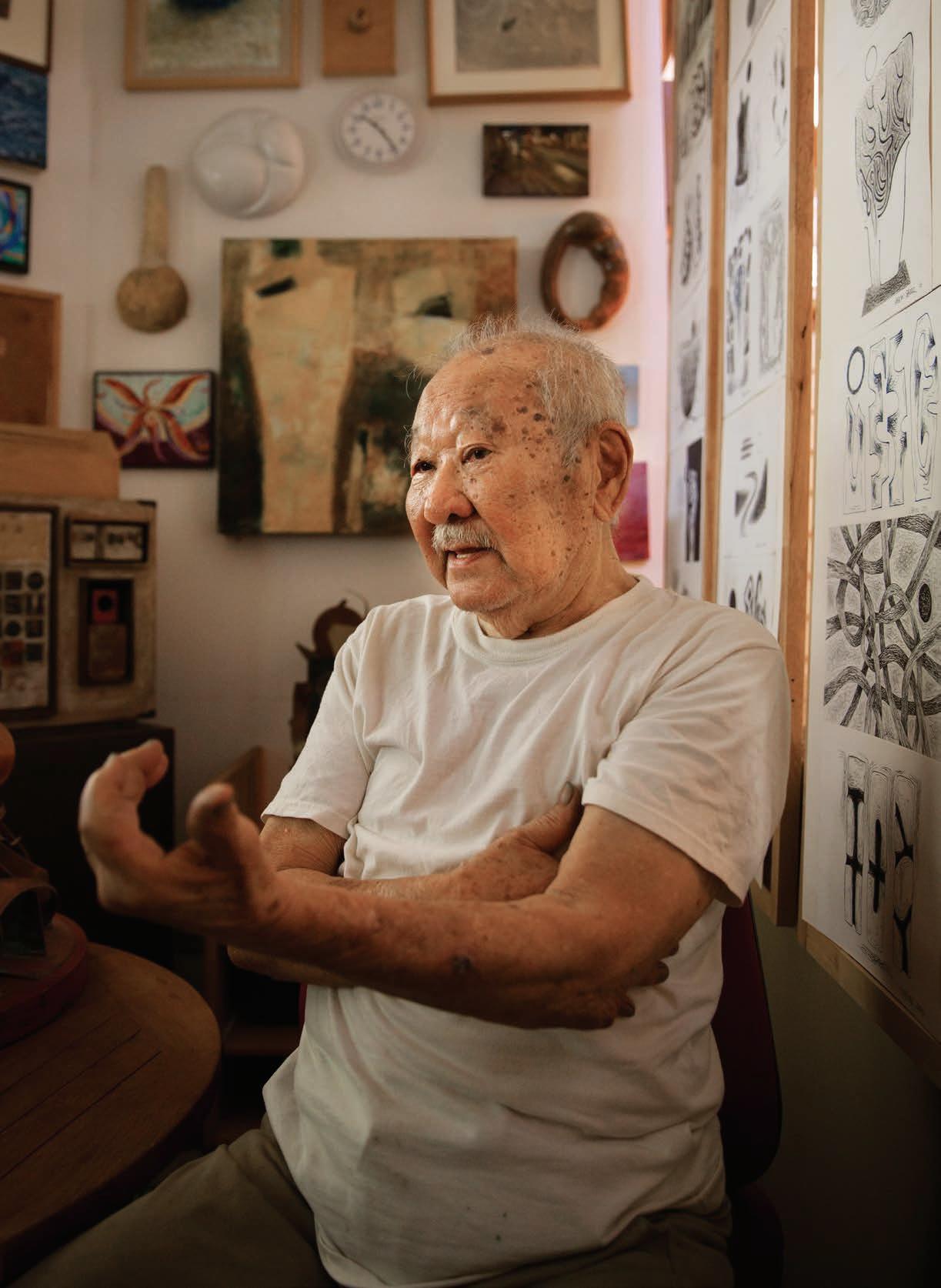
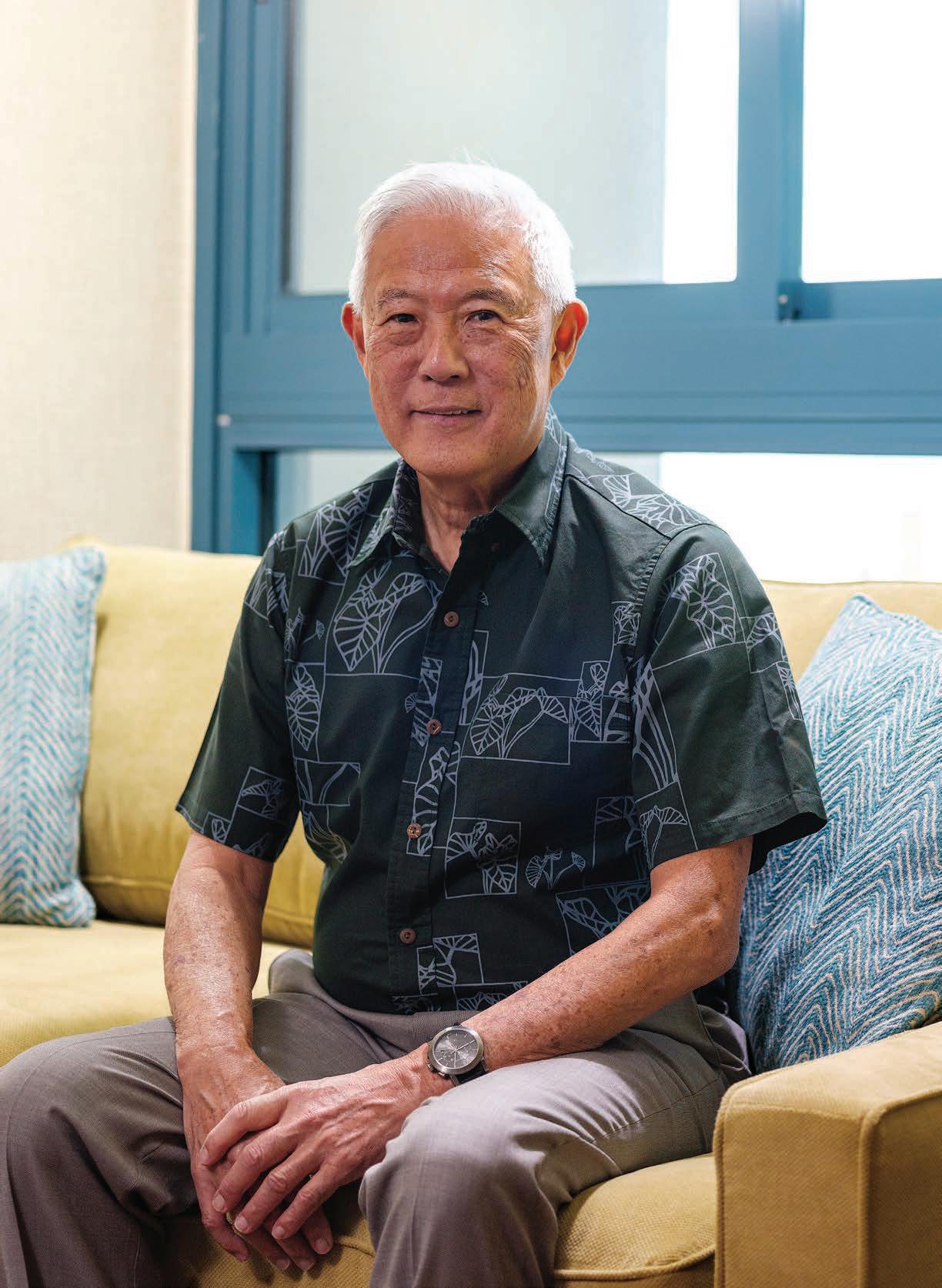

Local leadership guru shares advice on staying relevant as we age, as well as the most effective ways to impart knowledge to others, no matter their age
Glenn Furuya is the founder and president of Leadership Works, which was founded in 1982. Since then, he’s coached several generations of Hawai‘i workers, teaming with Hawaiian Airlines, Kamehameha Schools, Servco and many other companies. At age 74, he’s still robust and dedicated to teaching his Five Seeds of Effective Leadership workshops.
“At this stage in my life and career I want to help the next generation move up into leadership,” he says.
“Oftentimes when we think of leaders, we think of the outstanding young people with fellowships and fancy degrees, the ones destined to be CEOs. That’s not my focus. The everyday managers and supervisors, they are the unsung heroes. They get little recognition yet are the key for how companies survive and thrive. If we don’t grow the next generation, teach them how to lead, then what’s our future?”
Furuya believes in the concept of shoshin, a Zen Buddhism term for a beginner’s mind. “That is where you are constantly learning, staying contemporary,” he explains. “You gotta keep up if you are going to stick around.”
OVER YOUR 40 YEARS OF PRACTICE, HAVE YOU SEEN THE CONCEPTS OF LEADERSHIP CHANGE? OR IS LEADERSHIP A TIMELESS QUALITY?
E.O. Wilson had a quote: “We are drowning in information, while starving for wisdom.” You go to Google and
type in “leadership,” there are like a billion entries. So, what we really focus on is, what is wisdom? What are those practical, timeless truths? As a leader, it doesn’t matter if it was in the 1800s, 1900s or now. There are certain things that are fundamental. How do you solve conflicts? How do you communicate? How do you apologize if you did something unacceptable?
HOW CAN LEADERS BE SUCCESSFUL WORKING ACROSS GENERATIONS?
I try to shy away from generational work because it can create biases or prejudices. You can have younger people who are very old-school, after all. So, focus on what is appropriate to the person and the situation. You have to be observant and see what’s in front of you. You have to shed your personal preferences, and then you have to respond appropriately.
WHAT TIPS DO YOU HAVE FOR STAYING VIBRANT?
The central issue for me is to stay in good health. In your 70s, you’re going to see a cumulative effect of whatever you did up to that point.
I’ve been almost obsessive about taking care of my health. Every morning, I do rebounding (an exercise sometimes described as aerobics on a mini-trampoline) for 30 minutes. I swim four days a week, intensely, like sprint swimming, and take long, rapid walks. For the past 50 years I have stuck to those things.
I eat well. Two-thirds is fresh things like vegetables and fruits, and one-third
can be fun foods like cake. I still do a lot of reading – I read about two books a month on leadership. I meditate every day. I spend time with my family. I take short naps, like 10 minutes, and visit the doctor because early detection is your best prevention.
WHEN KŪPUNA ARE TRANSITIONING TO DIFFERENT POINTS IN LIFE, SUCH AS BECOMING MENTORS OR MOVING TO VOLUNTEER WORK, HOW DO YOU COACH THEM TO USE THEIR LEADERSHIP SKILLS?
There’s vertical communication; that’s where I’m the boss and I tell you what to do. And then there’s lateral communication, it’s horizontal, we talk story, it’s same-same, you know? The elder has to take on more of a horizontal type of communication. With vertical, (younger people) are going to stop listening, so your good intent to pass on wisdom gets lost because they stop listening and drift away.
Also, in Hawai‘i there’s the East-WestPolynesian blend. It’s a unique culture. If you study this blend, out of it comes two patterns of leadership: Asian and Polynesian are a circular leadership culture, relationship oriented, while Western culture is much more linear: “Get it done, and get it done yesterday.”
In Hawai‘i, people have the benefit of understanding the linear, we know how to get the job done, but we’ve also got the circular piece. The best leaders have both.
- KATHRYN DRURY WAGNER









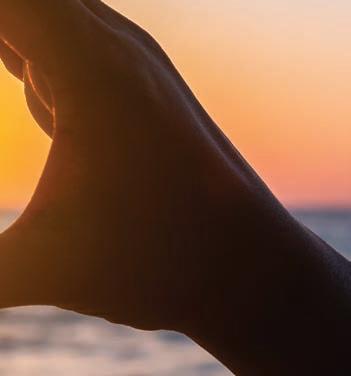



BY CHAVONNIE RAMOS


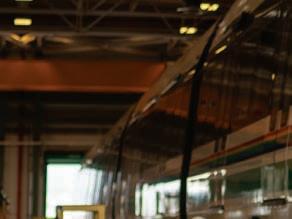
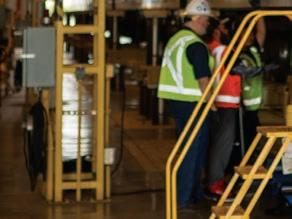

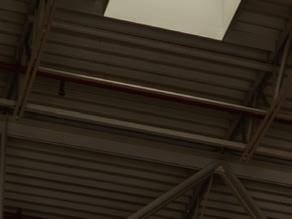


SKYLINE RAIL SYSTEM’S 43-ACRE operations and control center in Pearl City is where workers oversee the driverless system and maintain and clean the trains.
In the control room, five workers monitor the Skyline system with a live map showing where trains are, and they have access to 1,500 security camera angles at the stations and onboard the rail cars.


Every day, workers inspect and clean the five trains that run on the 10.75−mile first segment, which runs from East Kapolei to Aloha Stadium.
“We wash them, we clean them, we cuddle them and we try our best to have the trains

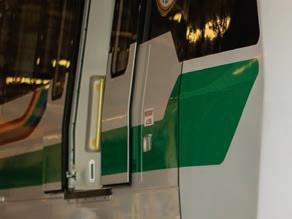
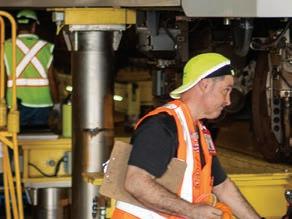
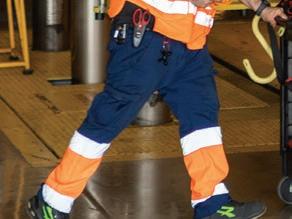


ready every day for the people of Honolulu,” says Marcello Gamba, principal operations & readiness manager for Hitachi Rail Honolulu, the company in charge of manufacturing and maintaining the trains and their technology.
When segment two, which runs from Aloha Stadium to Kalihi Transit Center on Middle Street, opens in 2025, two more trains are scheduled to be added to keep up with the system’s 10−minute spacing between arrivals.


There are now 19 trains in use or available in the operations and control center, with a 20th expected to be delivered this year.
tinyurl.com/skylinehnl


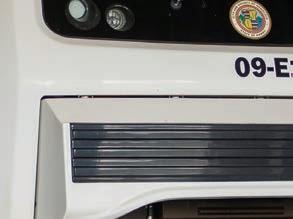
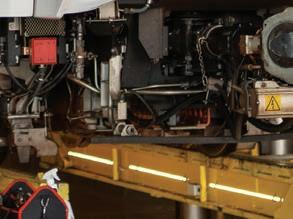
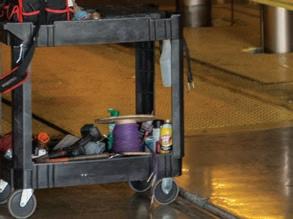


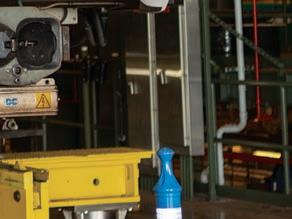
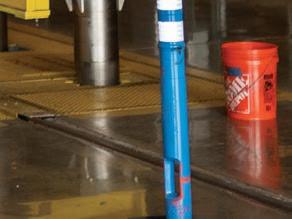

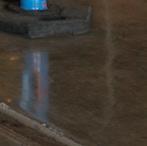
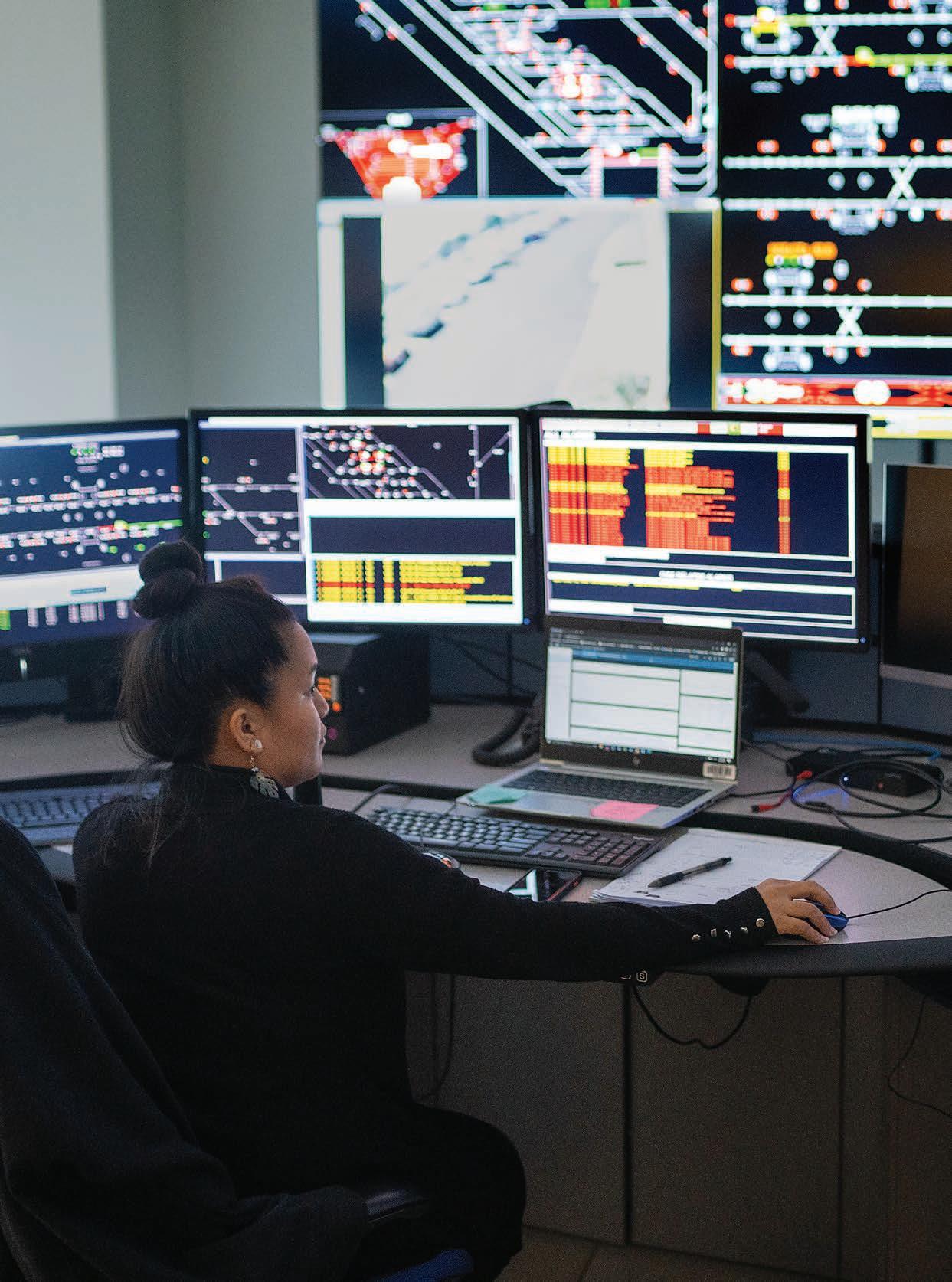

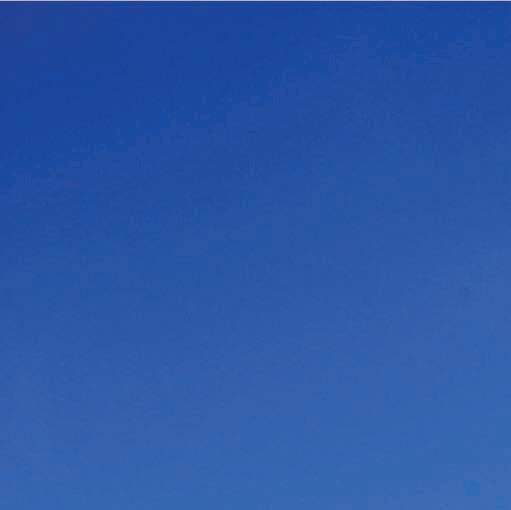






The housing crisis on Maui has been at a critical point for years, with a broken system failing to produce affordable homes for working families.
The fire that swept through Maui’s communities in August only made a bad situation heartbreakingly worse, robbing us of loved ones, homes, and livelihoods.
In 2020, the Hawai‘i Community Foundation launched the House Maui Initiative to bring everyone to the table to create affordable housing solutions so kama‘āina families can continue to call Maui home. Today, in the wake of the fire, our resolve has only grown stronger.
House Maui stands with Maui families. We’re fighting for them, alongside our nonprofit partners, home-builders, businesses, philanthropists, elected leaders, and everyone in our community committed to finding stable, long-term housing for those displaced by the fire—and for all kama‘āina on Maui.
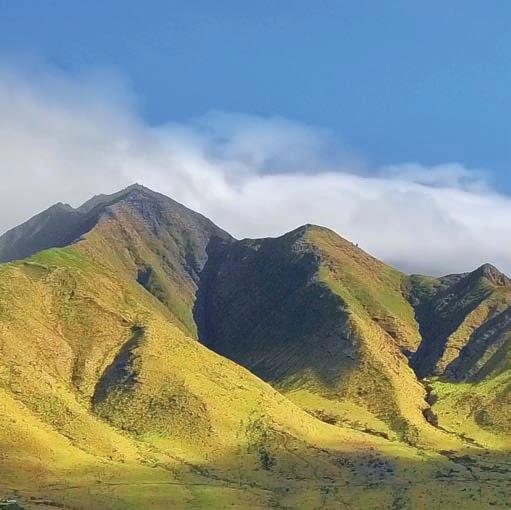

To stay connected with our work, sign up for email updates at housemaui.com.


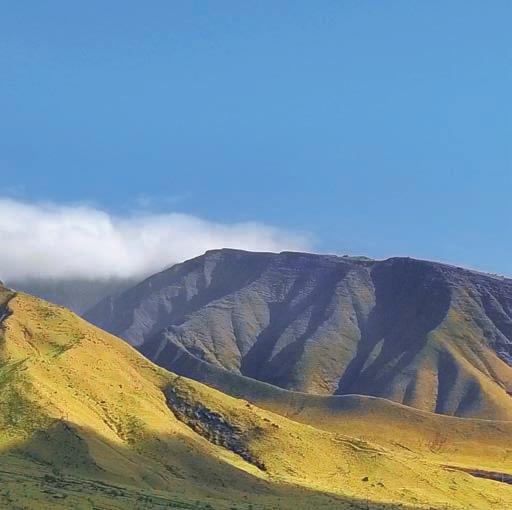



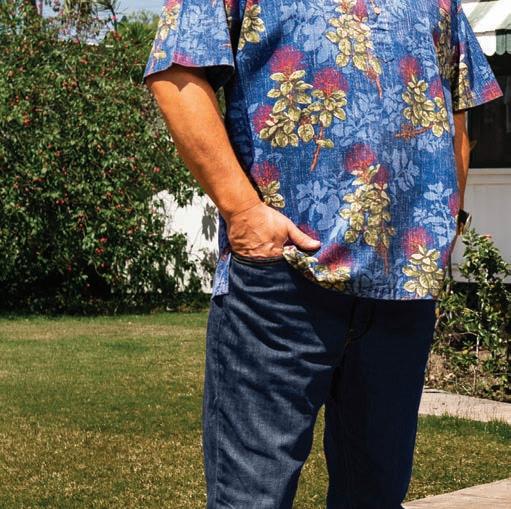


Patrick Ono

POSITION: District Manager
LOCATION: Nawiliwili, Hawaii
DATE HIRED: Feb 27, 1997
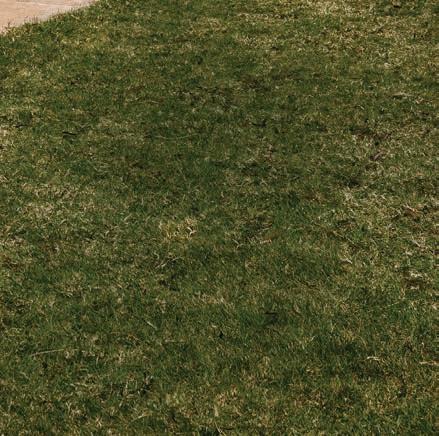

NOTES: Operations expertise from years of managing teams across the western region. Passionate about fighting community hunger. Serves on Hawaii Foodbank’s Kauai Advisory Board. Arranged transport of the Foodbank’s new refrigerated truck to Kauai. Champions food drives and distribution events to support organizations like Nana’s House in Waimea.

Matson’s people are more than Hawaii shipping experts. They are part of what makes our community unique. Visit Matson.com

